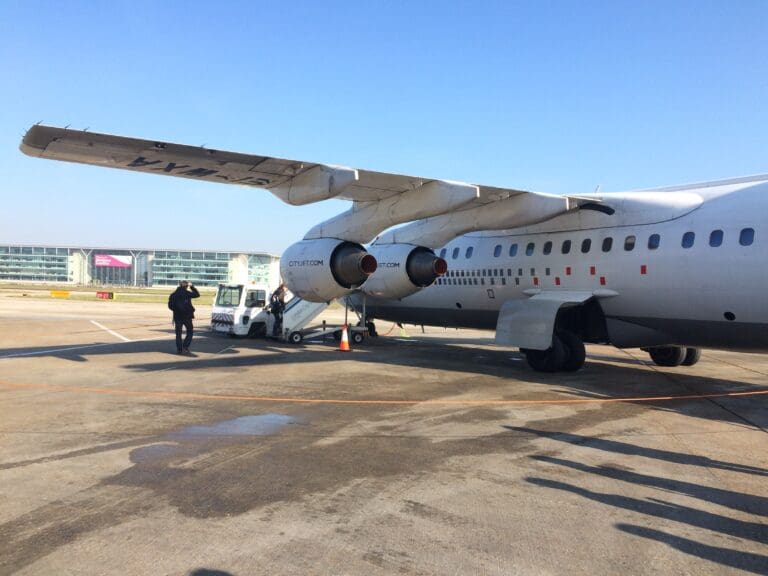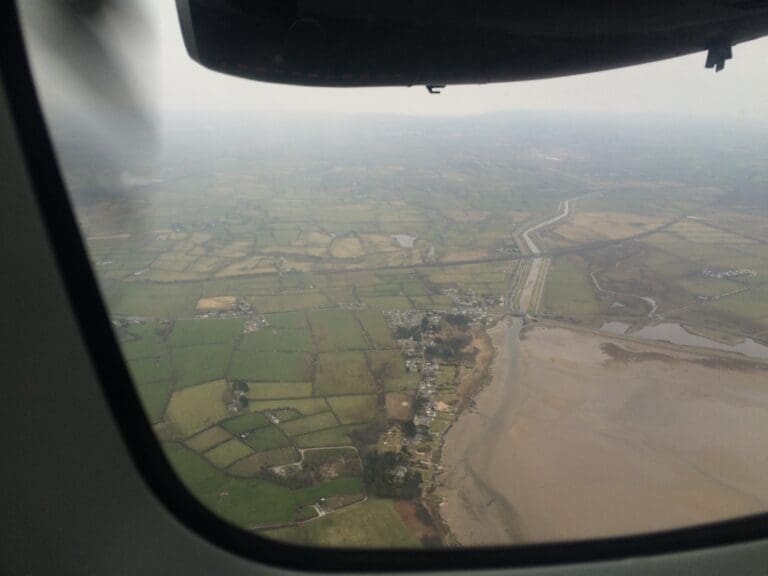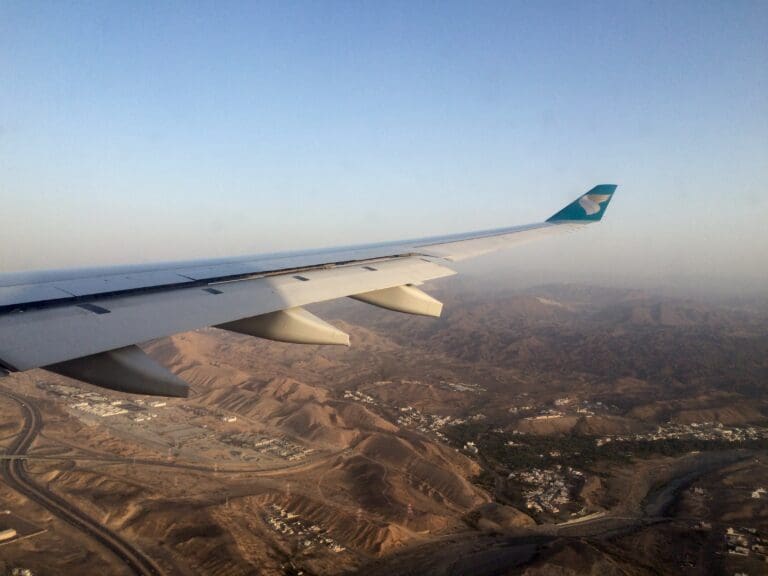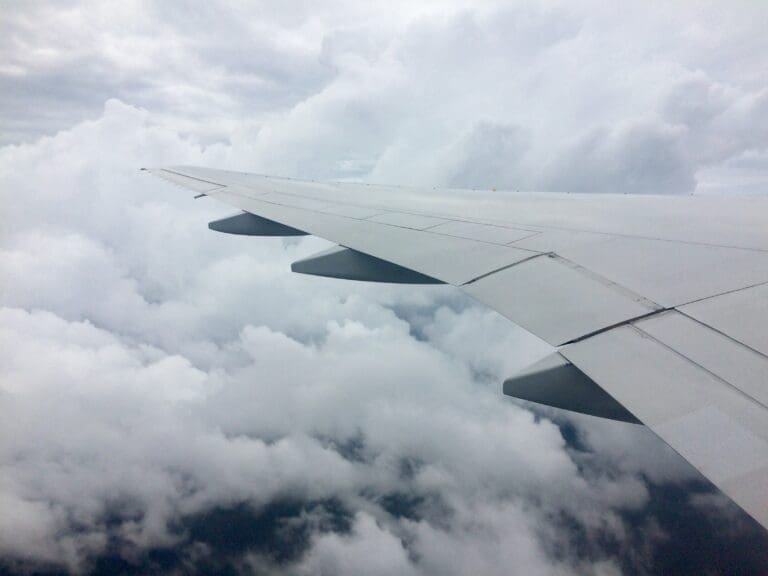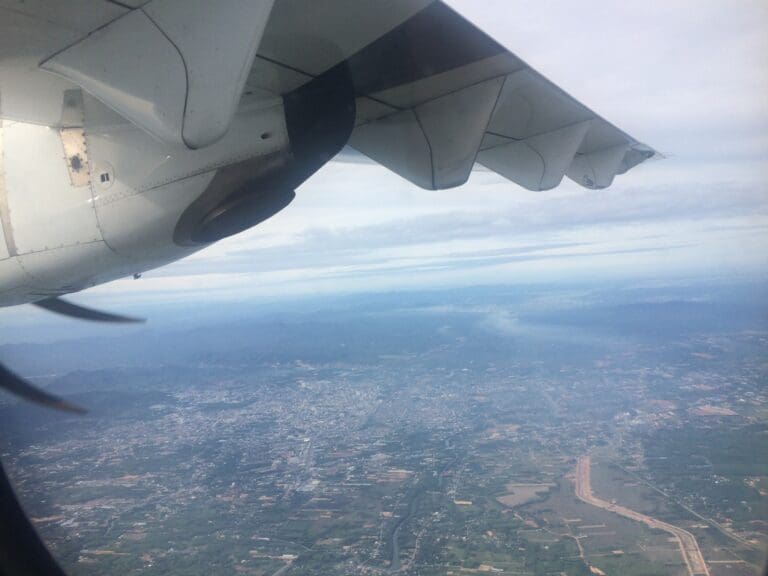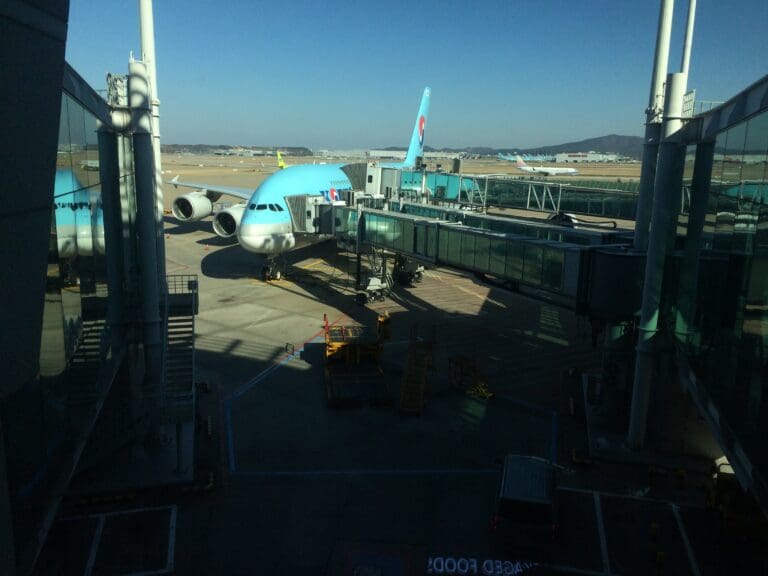Remembering Korea’s Short-Lived Boutique LCC: Seoul to Gwangju on an Air Philip Embraer 145
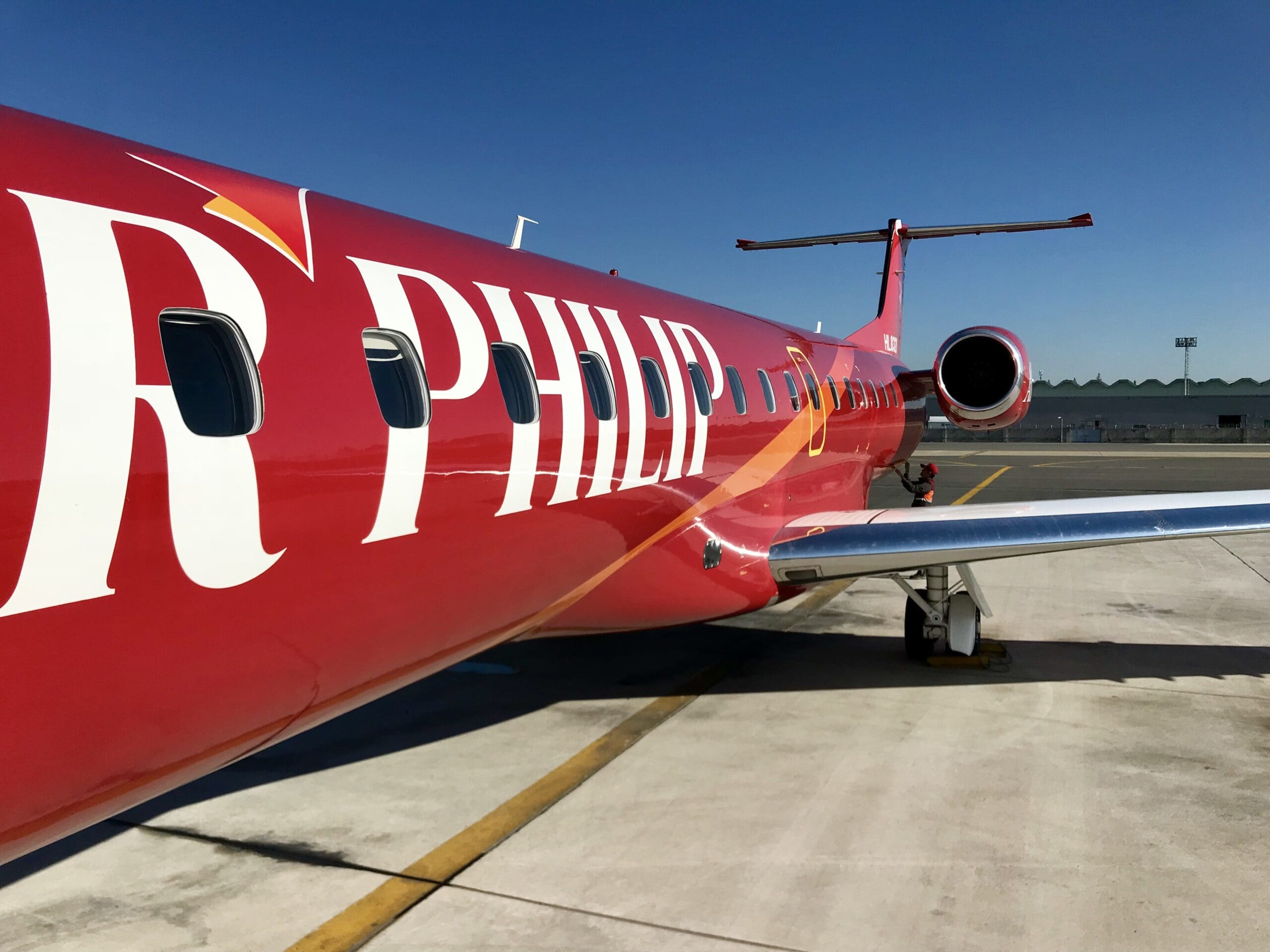
Background
Gracing the Korean skies for no more than seven months, you would forgiven for never having heard of Air Philip. I first became aware of the airline when I stumbled across a news article detailing the ambitious goals of this mystery start-up carrier in August 2017. However, perhaps somewhat pessimistically I assumed that the airline would end up sharing the same fate as many other Korean start-up carriers and ultimately fail to take to the skies.
Hailing from South Jeolla province in Korea’s southwest corner, Air Philip intended to establish a network of domestic routes from Gwangju Airport, and international routes from the modern yet largely empty airport at Muan, 26 miles away. The option to have two bases so close to each other was likely explained by Gwangju’s inability to handle international services due to its lack of immigration facilities. From these airports, the airline initially planned on operating domestic services to Gimpo and Jeju, with plans to expand its network to incorporate Busan, Incheon and Ulsan alongside the under-construction airports on the islands of Heuksan and Ulleung. Meanwhile, from Muan, the airline planned to establish services to Guam, Hong Kong, Japan, the Philippines, Russia and Taiwan. In terms of fleet, the 50-seat Embraer 145 would power the airline’s initial expansion, intending to later move on to operate Embraer’s larger jets.
In January 2018, adored with the Air Philip’s red and white livery and featuring a customised interior, the airline’s first aircraft touched down in Korea. Whilst this brought Air Philip one step closer towards taking to the skies, as Gimpo-based uSKY Air had proven in 2016, this in no way served to guarantee the airline’s commencement of operations. By the spring of 2018, it had become obvious that the airline had spared no expense in its attempts to establish a strong level of brand awareness. This involved hiring Korean-American Hollywood actor Daniel Henney to serve as Air Philip’s brand ambassador, placing of advertisements in key locations around Seoul and producing several professional-looking promotional videos. Whether such efforts worked is another matter – after a quick survey of my Korean friends, none of these had ever heard of the airline! Marketing themselves as a luxury low cost carrier, Air Philip proposed a level of domestic service that was then unseen in Korea, although their willingness to adopt this model raised further scepticism of their potential for sustainable success.
Perhaps coming as a surprise to the sceptics, in late June 2018, Air Philip held a grandiose ceremony with the airline’s executives and crewmembers alongside Henney and local politicians and VIPs after which the airline’s Embraer was put to work on flights between Gwangju and Gimpo. To some, the plethora of transport options between Gwangju and Seoul made Air Philip’s decision to serve this route a little illogical. Not only did Air Philip join Asiana Airlines and their multiple daily Airbus A320 flights between the two airports, but tough competition was provided by Korail’s highly regular KTX train services. The latter whisks passengers off to central Seoul in under two hours whilst a plethora of cheaper yet slower train and bus services are also provided between the two cities.
In September 2018, Air Philip’s second Embraer 145 touched down in Korea, and as with their first aircraft, no expense had been spared in giving the aircraft a complete cabin refit. Meanwhile, sporting a distinctive all-red colour scheme, this came with a different livery to their first aircraft. With this new delivery, Air Philip opened up two new routes, joining five other carriers on the 113-mile hop between Gwangju and Jeju as well as commencing services on the busiest air route in the world from Jeju to Gimpo.
With the delivery of the airline’s third Embraer 145 in November 2018, the airline turned to Muan where the airline opened up two new routes to Incheon and Vladivostok whilst following the delivery of their fourth aircraft the following month, the airline began services to Okinawa. However, all was not plain sailing for the airline, in November 2018 Air Philip’s CEO was arrested on suspicion of securities fraud. Meanwhile, even those with little knowledge of business may claim that the carrier’s rate of expansion was far too rapid and that the costs spent in raising brand awareness were too high. By the end of January 2019, the majority of Air Philip’s Muan operations came to a close with their final international service to Okinawa coming to a halt in early February. Whilst the airline’s domestic operations from Gwangju were sustained for a little longer, these were met with the same fate in early March 2019 with the airline falling victim to bankruptcy.
Thankfully, during Air Philip’s short lifetime, I managed to catch a ride on two of their services. The first was a flight between Gimpo and Gwangju in October 2018 and the second in early November 2018 from Jeju to Gimpo.
Booking
Overcomplicated, infuriating and near-impossible – judging by other peoples’ experiences these are perhaps the best three adjectives to describe the process of booking a ticket with an international card directly with a Korean airline in 2010. Thankfully, since then, virtually all of Korea’s carriers have made their booking processes far more ‘foreigner friendly’, and, as a result, I have never encountered any major issues when booking with any Korean airline. However, for those wishing to fly with Air Philip, booking a ticket online for those unable to speak Korean and/or lacking a Korean bank card was perhaps a total impossibility. Even though I managed to satisfy both of these requirements, booking was still a far more complicated process than it should have been. The many pop-ups and browser extensions resulted in a somewhat infuriating booking experience that may have likely led many ‘regular’ passengers to book with one of Korea’s major carriers. Eventually, I managed to book flights on the airline’s then sole two routes. Whilst I accidentally deleted my receipts, as I recall the Gimpo to Gwangju flight came to around 25,000 won whilst the Jeju to Gimpo was an absolute bargain totalling less than 10,000 Won – this proving to be the cheapest ever ticket I have booked between Seoul and Jeju! For some comparison 10,000 Won will get you no more than two pints of beer in a cheap bar. With this fare including complimentary hold luggage, no additional extras were offered by the airline.
The Flight
As with all my trips to Seoul, that week I stayed in the west of the city, specifically in Seoul’s Mapo District. Given my location, and seeing as I did not have an incredibly early departure, I had little reason to travel to Gimpo Airport on anything other than the all-stop AREX train. At 0750, and with a little under two hours before my flight’s scheduled departure time, I headed out onto the chilly autumnal tree-lined streets and made my way towards Hongik University station. After a quick stop at a café for an overpriced takeaway coffee and at a street vendor’s stall for a cheap, freshly made roll of kimbap, I headed into the depths of this large interchange station. Once I had tapped in with my T-Money card, I headed down to the westbound AREX platform where an Incheon Airport-bound train showed up within a few minutes. Given the time, the train was unsurprisingly rather busy although many passengers disembarked at the following station, Digital Media City. From there, the train headed out into the open air and sped across the Han River, before entering the subterranean world and arriving at Gimpo Airport station at around 0825, ending my quick, easy and cheap journey to the airport.
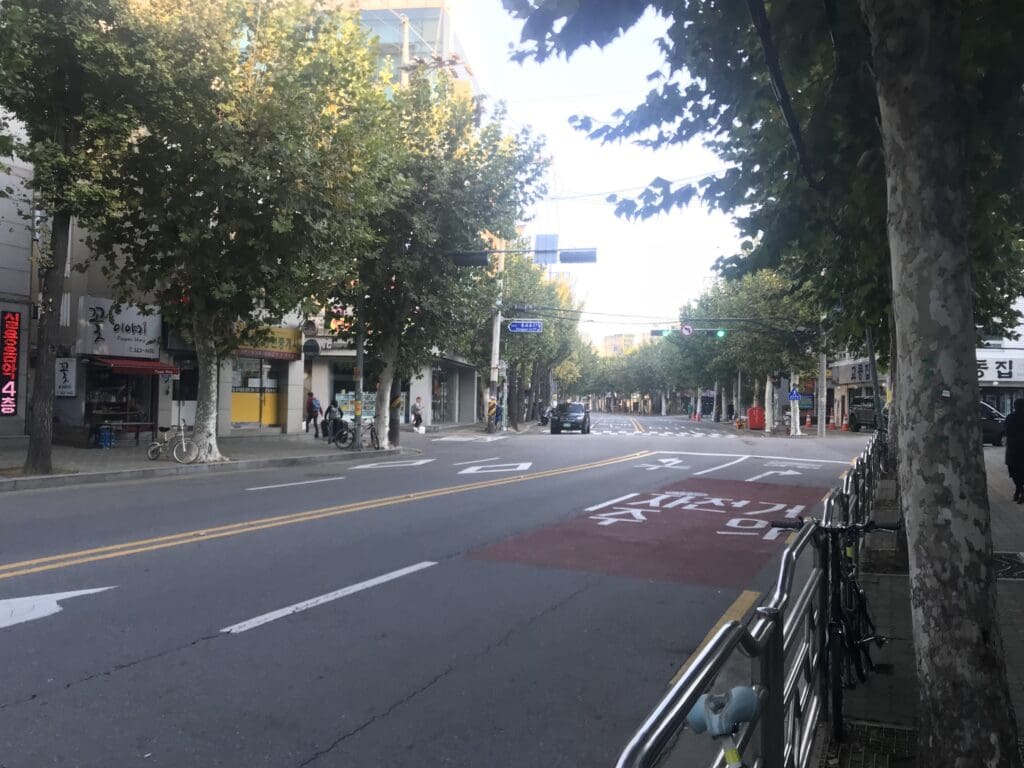
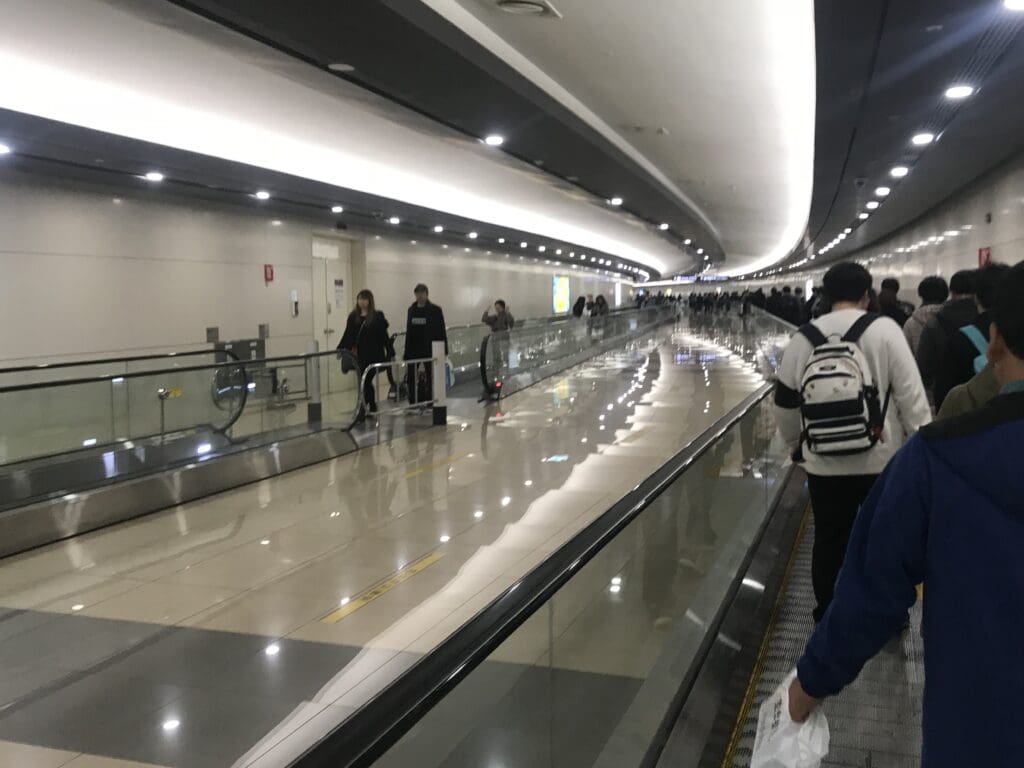
The only slight negative of taking the AREX train rather than a bus is that the station is located a fair walk away from Gimpo Airport’s two terminals. Although, seeing as this is fully underground, passengers are protected from Seoul’s intense summer heat and bitter winter cold, whilst moving walkways are on hand to speed up this journey. Once I had taken the escalators up to the domestic terminal’s check-in hall, as I had expected, that morning this was rather busy with plenty of business people, tourists and school groups checking in for flights across the country. However, despite this, few queues could be seen at airlines’ check-in desks, with the two manned heavily branded Air Philip check-in desks serving to be completely devoid of passengers. As soon as I walked up to one of these desks, the Air Philip staff member manning this gave me a friendly yet formal greeting in Korean. Considering the frequent false misconception that foreigners in Korea cannot speak Korean, I was pleasantly surprised by the fact that I was greeted in Korean. That said, booking on Air Philip’s website would have been virtually impossible for anyone unable to speak the language.
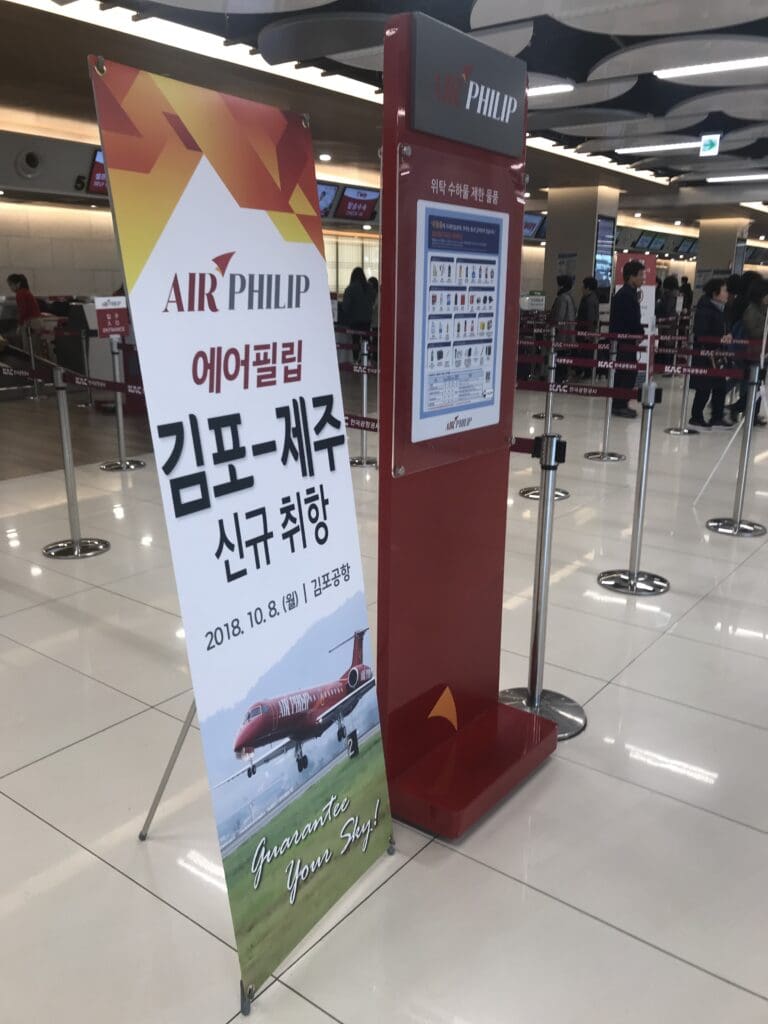
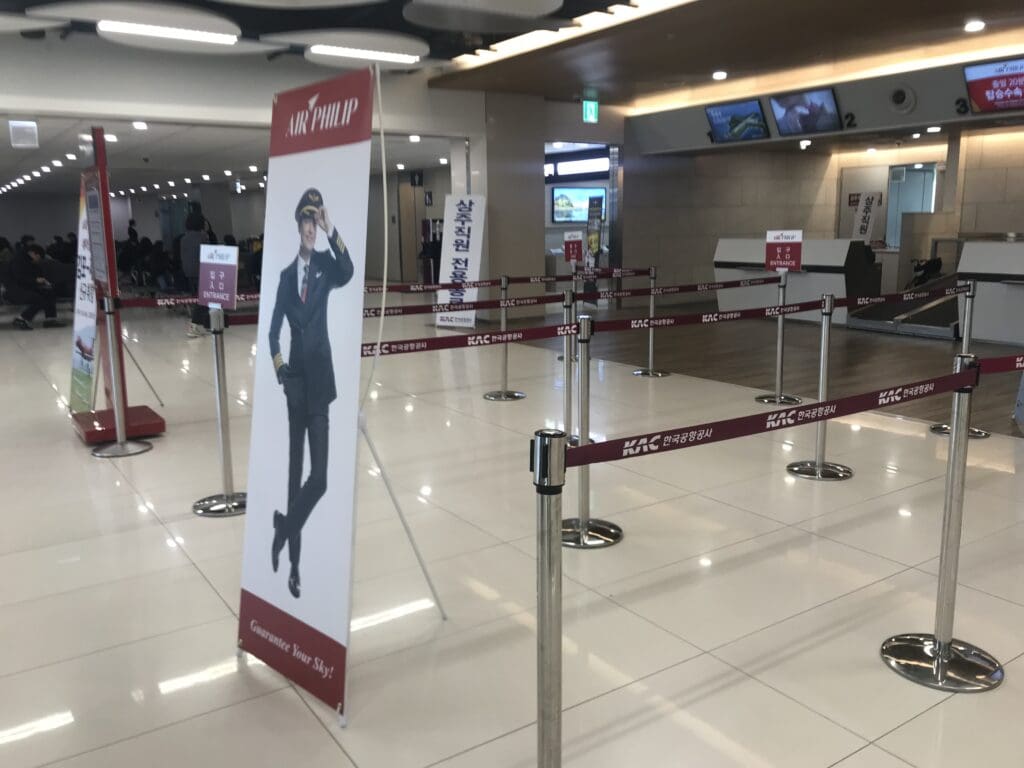
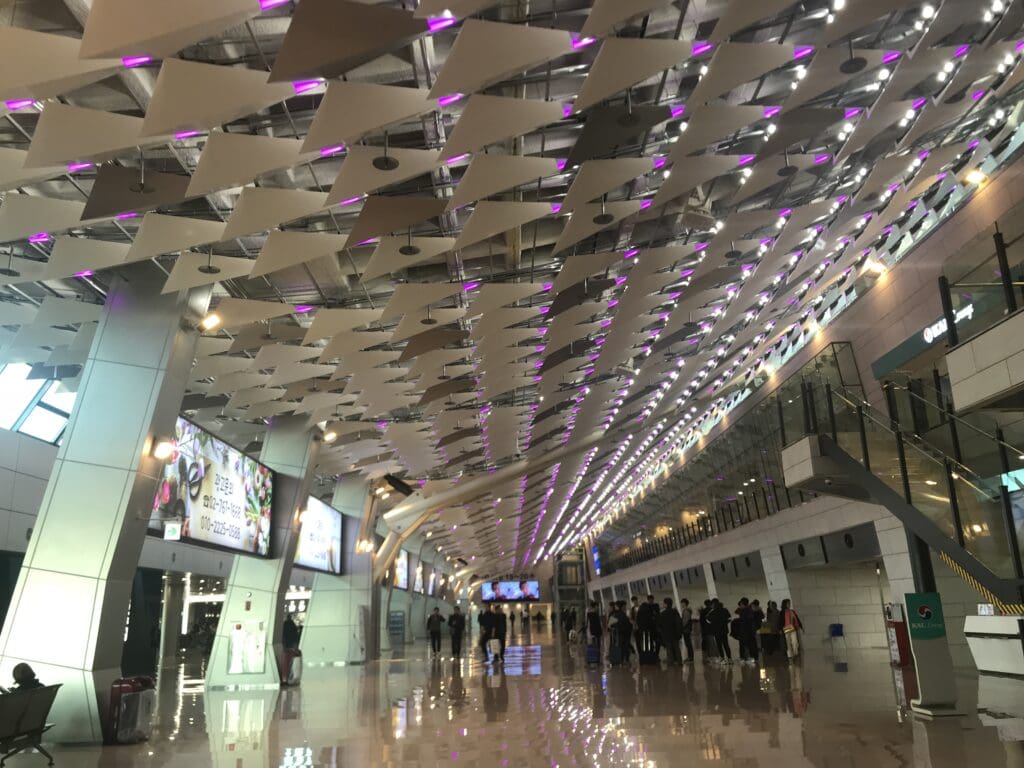
Following some quick keyboard tapping, the agent asked whether I wanted to sit in an aisle or window seat, as well as whether I wished to sit on the aircraft’s single or double seat side. Requesting a window seat but replying that I was happy to take either one of the A or C seats, this staff member then pulled out a laminated seat map and asked me whether Seat 9C would be okay. Once I had confirmed that this was, my receipt-style boarding pass for the flight was printed out and handed over to me, thereby ending the very pleasant check-in experience. From the check-in hall, I headed up to the escalators to the terminal’s identity and security check area. Whilst this was fairly busy, seeing as all security checkpoints appeared to be open, the queues moved along very quickly and I soon entered the airside area after a painless three-minute wait.
At the time of my flight in late October 2018, Gimpo’s domestic terminal renovation works had finally come to an end. As a result, both the airside and landside areas appeared to be in a much better, brighter and more modern state than they were several years earlier. That said, I was a little sad to see that in the course of these, the traditional displays in the main atrium of the airside departure area had been removed. As per usual, that day I found the airport’s complimentary wifi network to work well throughout the terminal whilst all appeared to be spotlessly clean. After a short stroll, I found a seat next to one of the terminal’s large windows and watched the near-constant stream of traffic outside. That morning, this consisted of the usual suspects with plenty of Asiana Airlines and Korean Air narrow and widebody aircraft to be seen, as well as jets from almost all of the country’s low cost carriers – Air Busan, Eastar Jet, Jeju Air, Jin Air and T’way Air. Whilst the aircraft may be based in Gimpo, for me, the highlight of my stay came in the form of the Hanwha Group’s Boeing Business Jet taxiing past on its way to the runway.
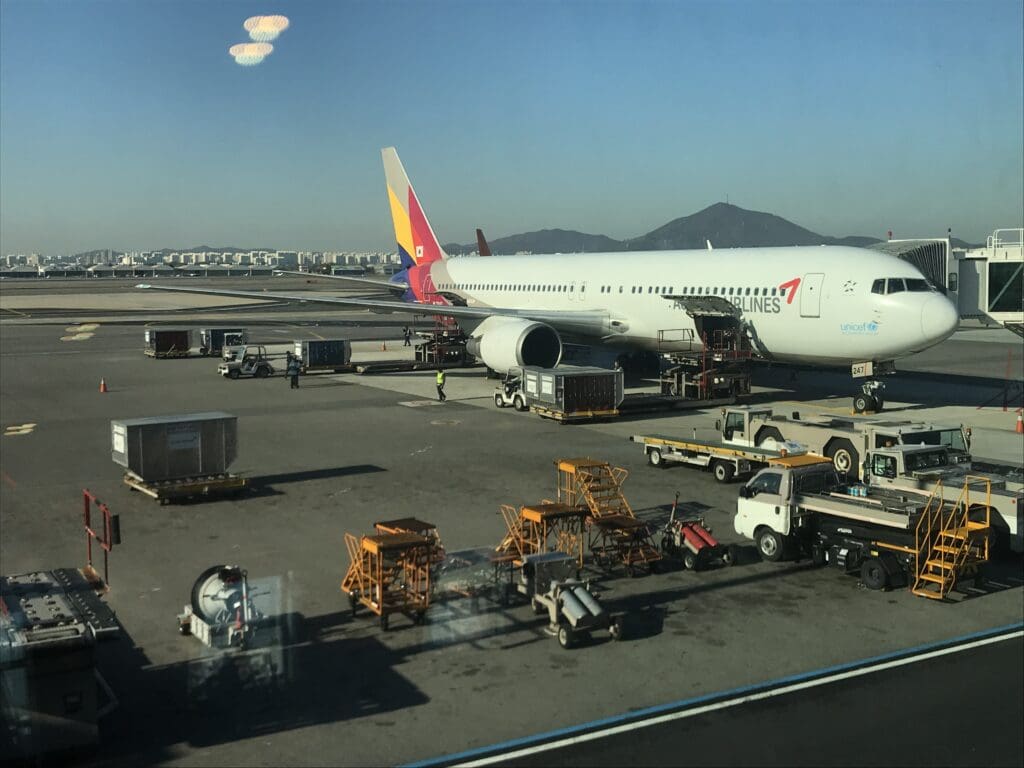
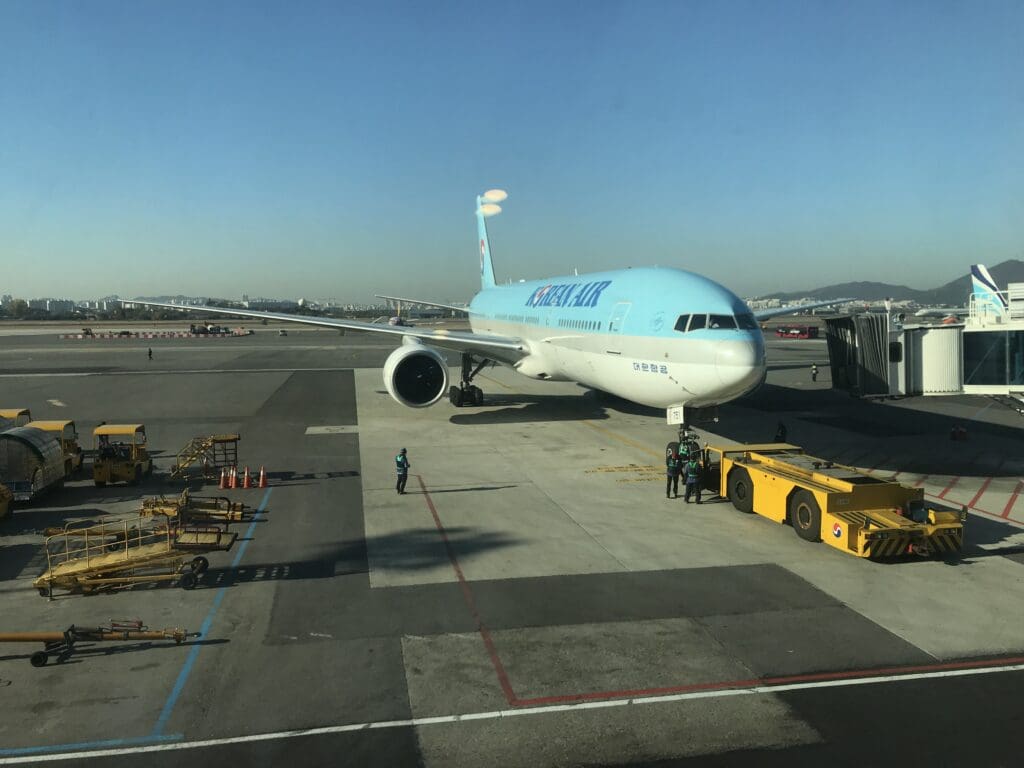
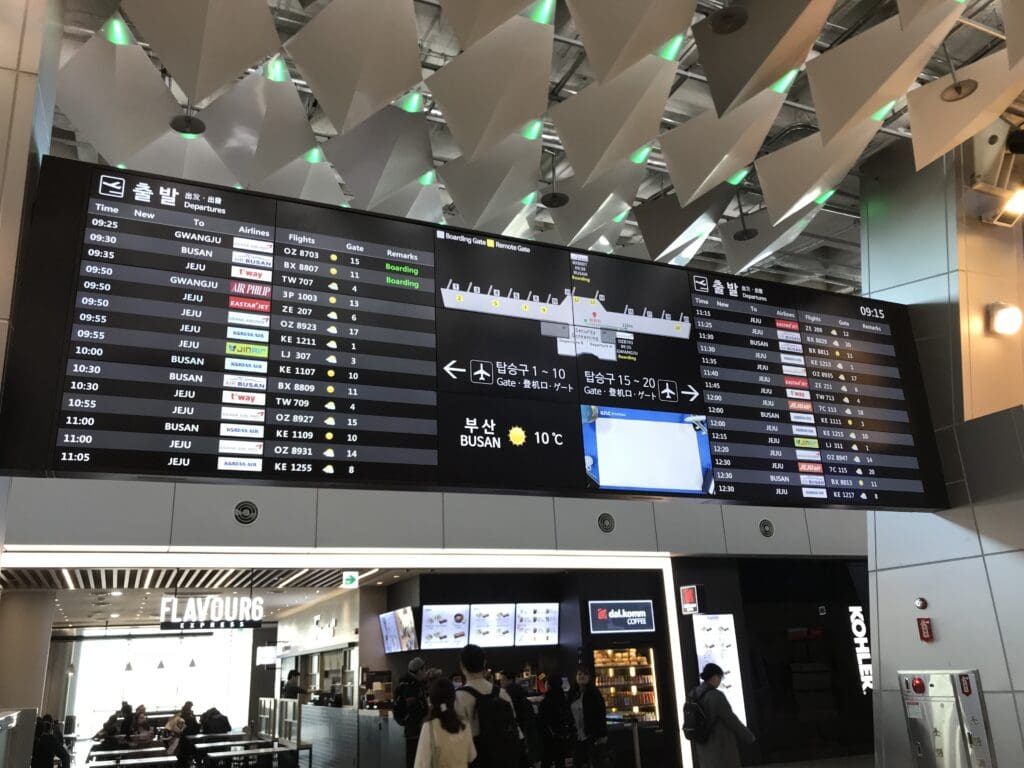
As I have noticed is usually the case at Gimpo, regardless of an aircraft’s size, boarding for the flight to Gwangju was set to commence twenty minutes before departure at 0930. As soon as the clock struck half past, one of the two staff members who had been responsible for checking in passengers appeared at the gate and announced the commencement of boarding in Korean only. Interestingly, this was broadcast over a portable speaker rather than the main terminal-wide announcement system that was used for all other flights. As soon as I heard this I strolled over to the Air Philip-branded gate podium where a selection of three different newspapers from Gwangju and the wider Jeolla region had been placed. Seeing as I was only the second passenger in the queue, within moments I had my boarding pass scanned and was thanked and wished a nice flight before I headed down two flights of stairs to ground floor level.
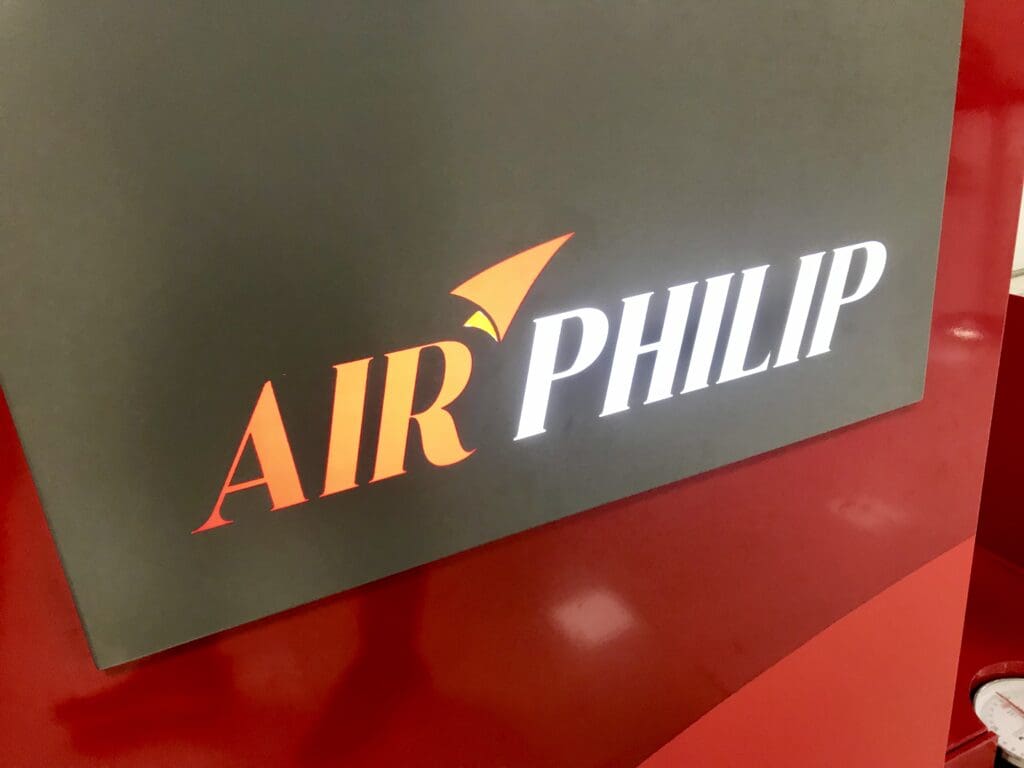
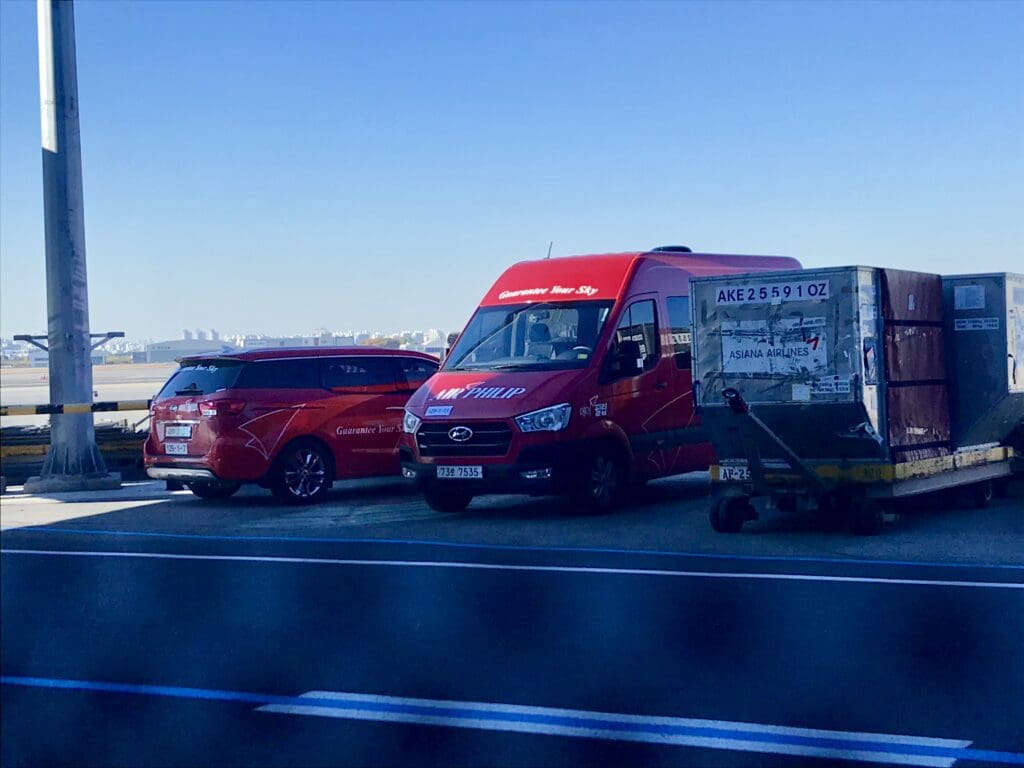
As I reached the bottom of the stairs I was bowed at, thanked again and advised to board the idling bus outside. Once again, Air Philip appeared to have spared no expense and to my surprise this bus sported the airline’s colours whilst inside television screens played one of Air Philip’s rather professional looking promotional videos. Whilst things may have gotten a little crowded on the bus had all the Embraer’s fifty seats been sold, that morning things proved to be very spacious with a grand total of fourteen passengers opting to fly with the airline to Gwangju. Within a couple of minutes, the final passenger boarded the bus and the doors closed before slowly pulling away from the terminal. During this short journey, the bus made its way past one of the latest additions to the Korean civil aviation industry, a Korean Air Airbus A220-300 as well as one of the industry’s oldest jets, an Asiana Airlines Boeing 767-300 preparing to head to Jeju. After heading across the apron, the bus soon pulled up to the bright all-red Embraer 145 where a small team of ground crew could be seen readying the aircraft for its flight.
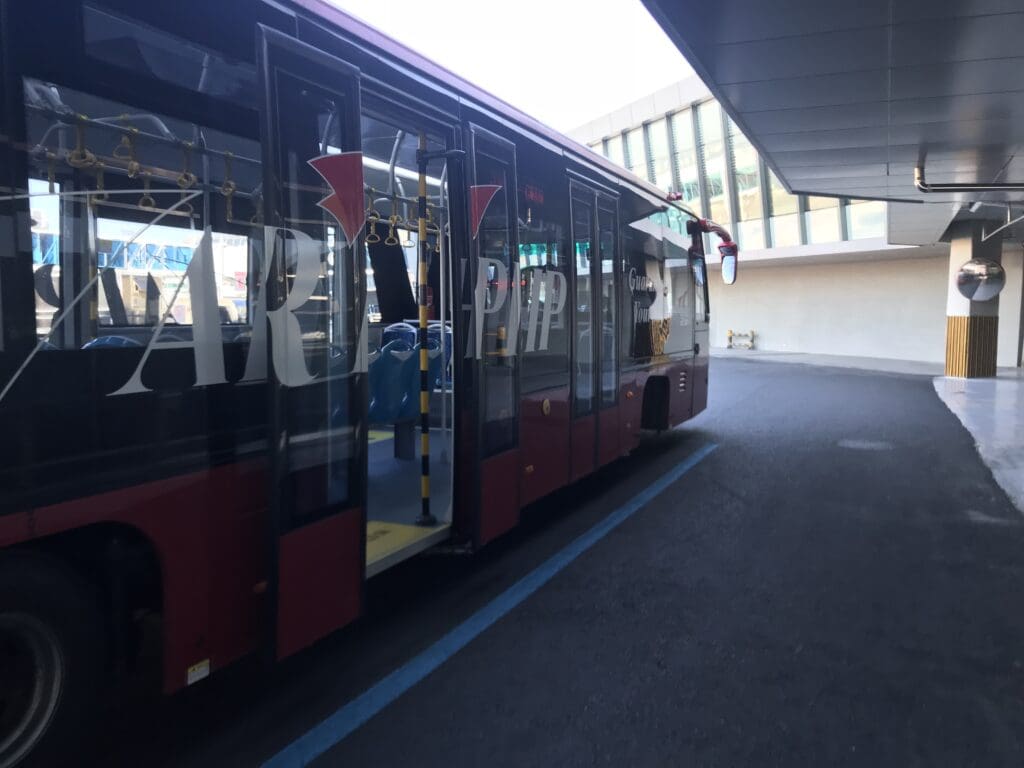
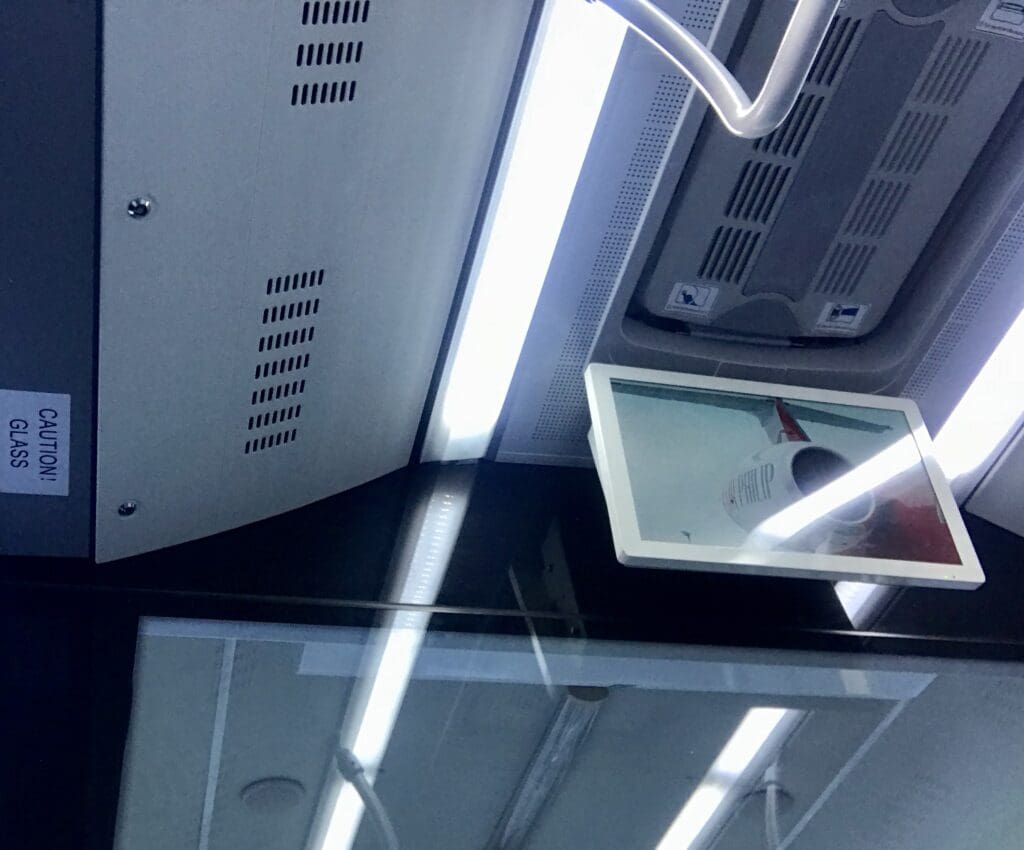
The aircraft making the 168-mile flight down to Gwangju would be Air Philip’s recently delivered second jet, Embraer 145LR HL8320. Having only arrived in Korea a little over a month before my flight, before this the aircraft had spent its life hopping across North America. Manufactured in 2000, the aircraft commenced its life with Chautauqua Airlines in September of that year as N272SK. This first wore the colours of America West Express, however, in 2003 the aircraft headed to Atlanta where it was painted into Delta Connection’s livery and began operating flights for this airline. Following the ceasing of operations of Chautauqua Airlines, from December 2014 the aircraft was operated by Shuttle America. In August 2016, the Embraer was flown to Kingman Airport in Arizona where it entered long-term storage, remaining on the ground until 2018 before eventually being brought back to life and flown across the Pacific to Korea.
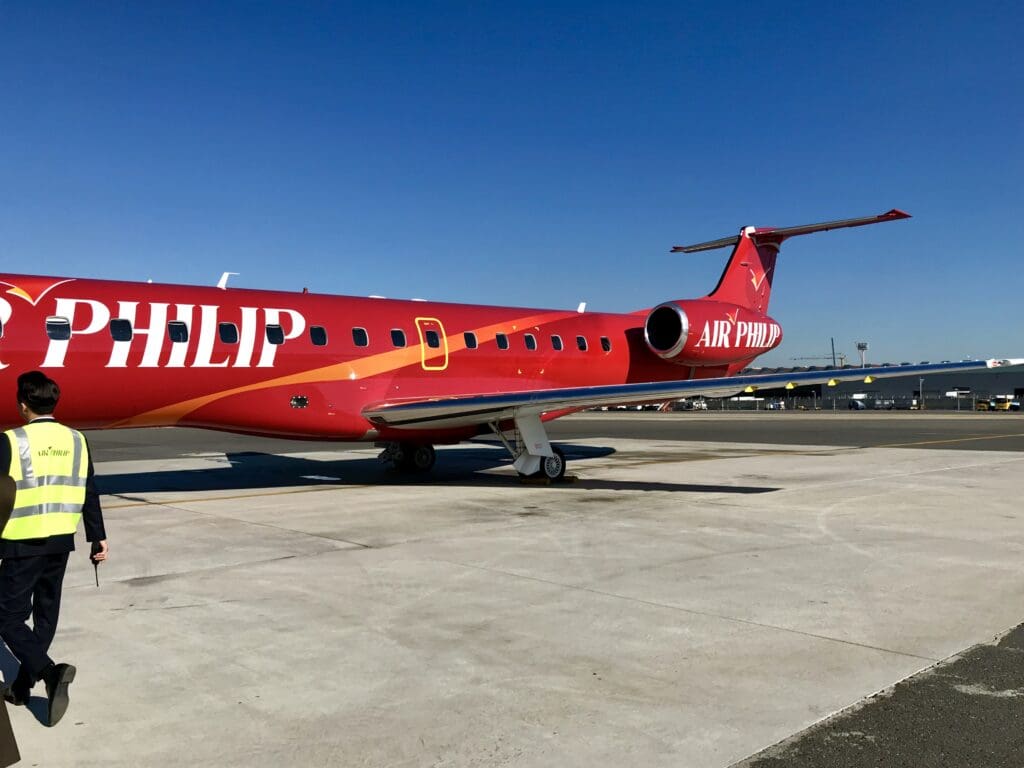
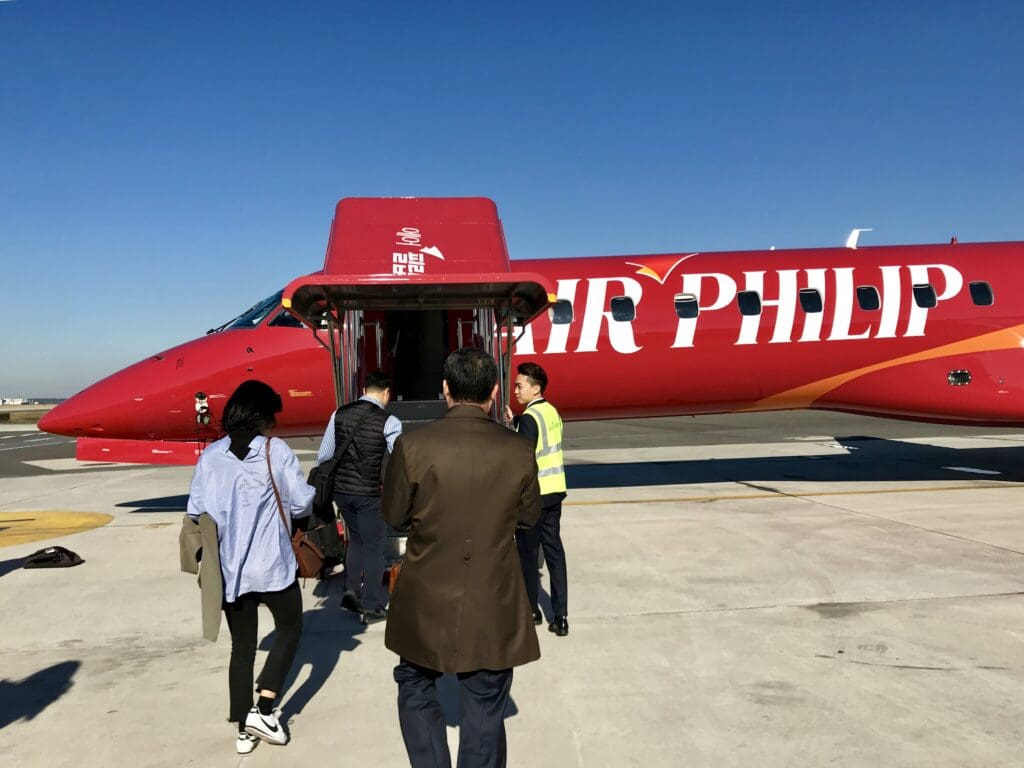
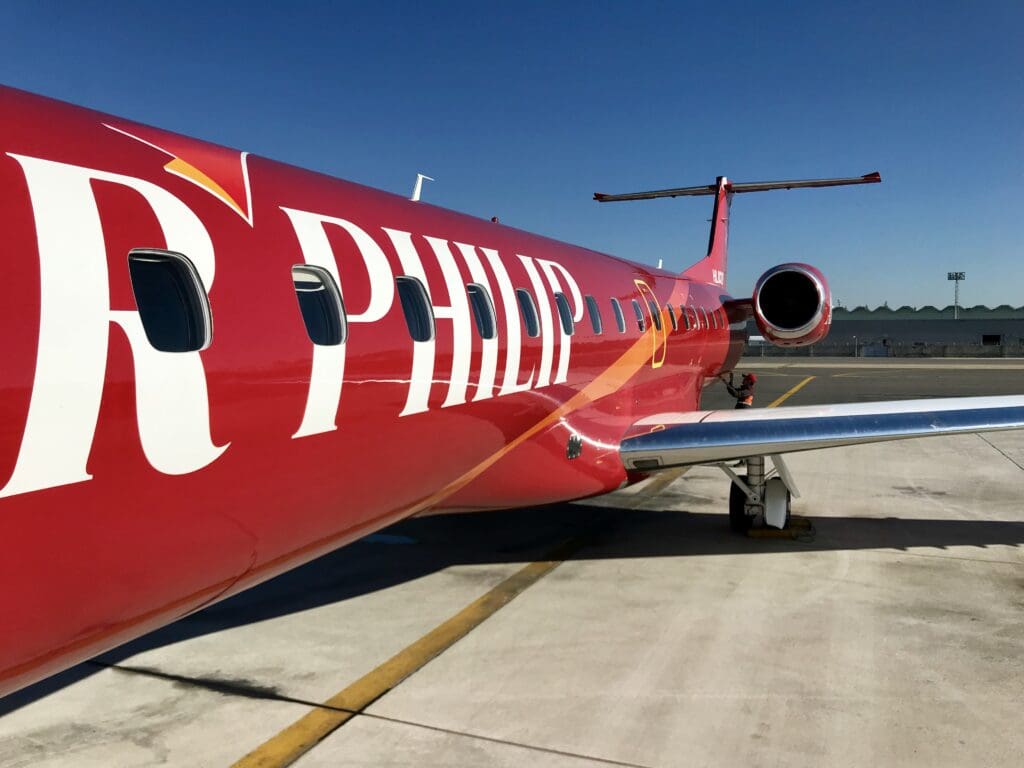
As soon as the bus pulled up to the aircraft, the doors slid open and the small collection of passengers made their way over to the front of the aircraft. After climbing up the Air Philip branded airstairs I bent over slightly so as not to bang my head and entered the small forward galley area. As soon as I was onboard, I received a warm greeting in English from one of the flight’s two cabin crew members and made the short walk down to Row 9 as classical music rang out through the cabin. Whilst the aircraft was not the youngest in the world, given the cabin’s total refit, as far as I noted, this was in tip-top condition with absolutely no signs of wear and tear. Aside from this, the cabin appeared to be spotlessly clean. As part of the cabin’s refit, all of the aircraft’s seats had been reupholstered with grey fabric and featured matching fabric antimacassars. Meanwhile, in keeping with the airline’s corporate colours, each seat also featured bright red seatbelt straps whilst red trimming had been fitted to the cabin. Upon taking my seat I was pleased to find that the seats were incredibly soft and comfortable, however, the legroom provided by these was not as plentiful as that offered by Asiana Airlines or Korean Air. Turning to the seatback pocket, this contained a trilingual safety card, an Air Philip branded safety card and a copy of the airline’s self-titled inflight magazine, all of which appeared to be in mint condition.
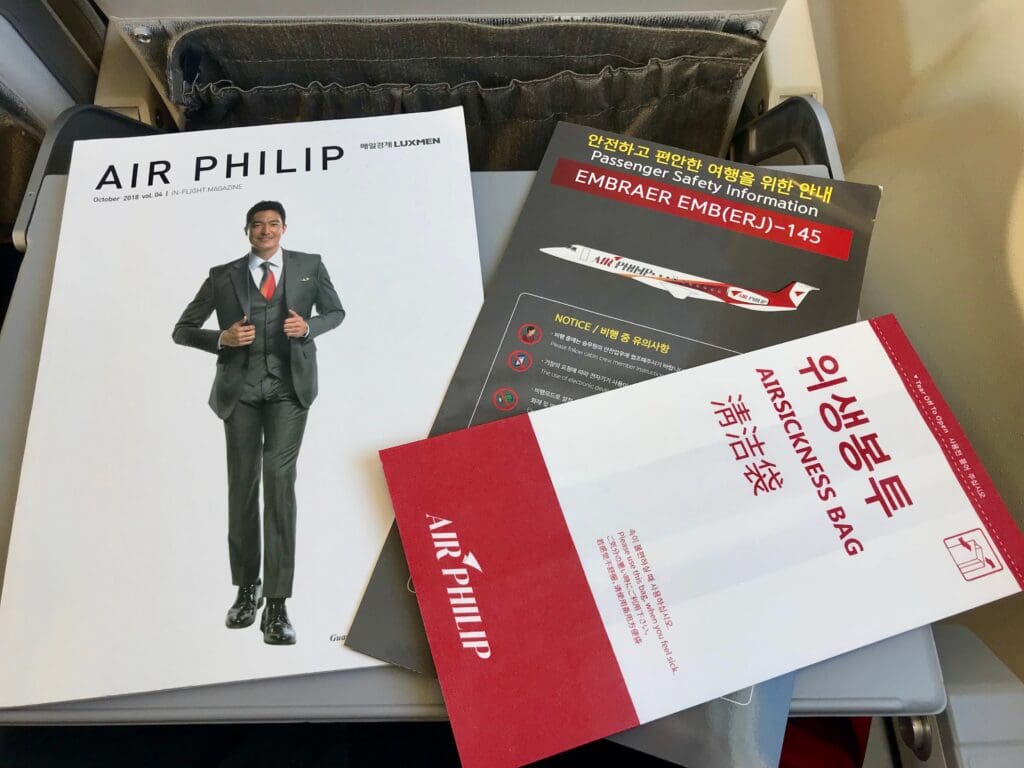
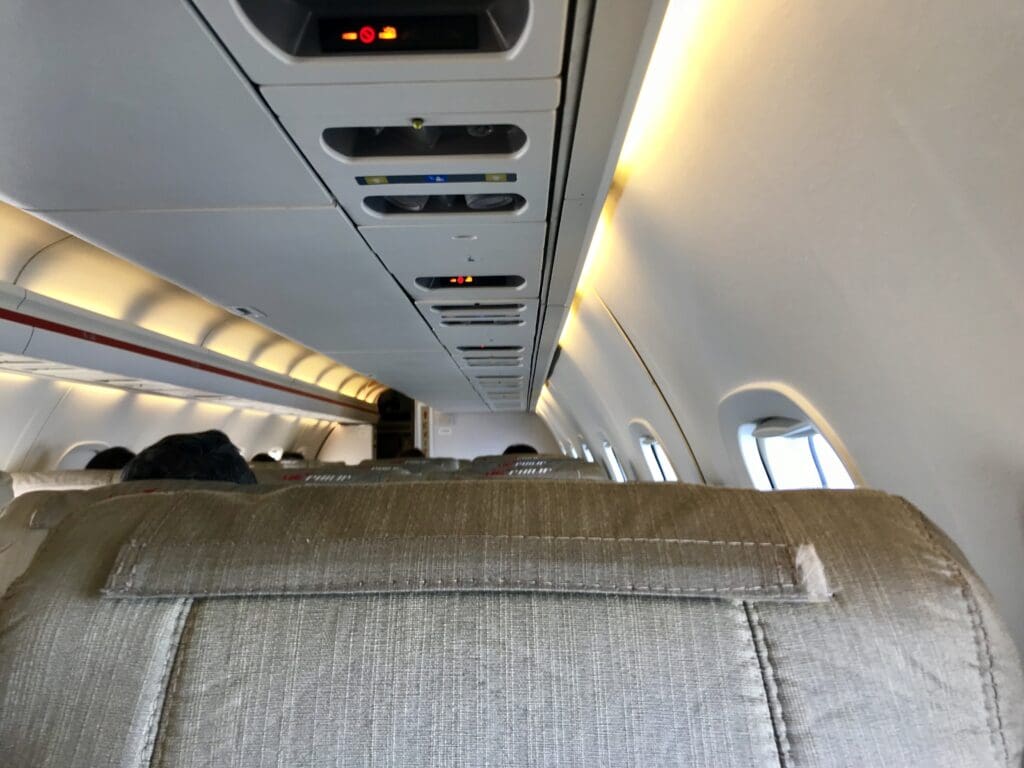
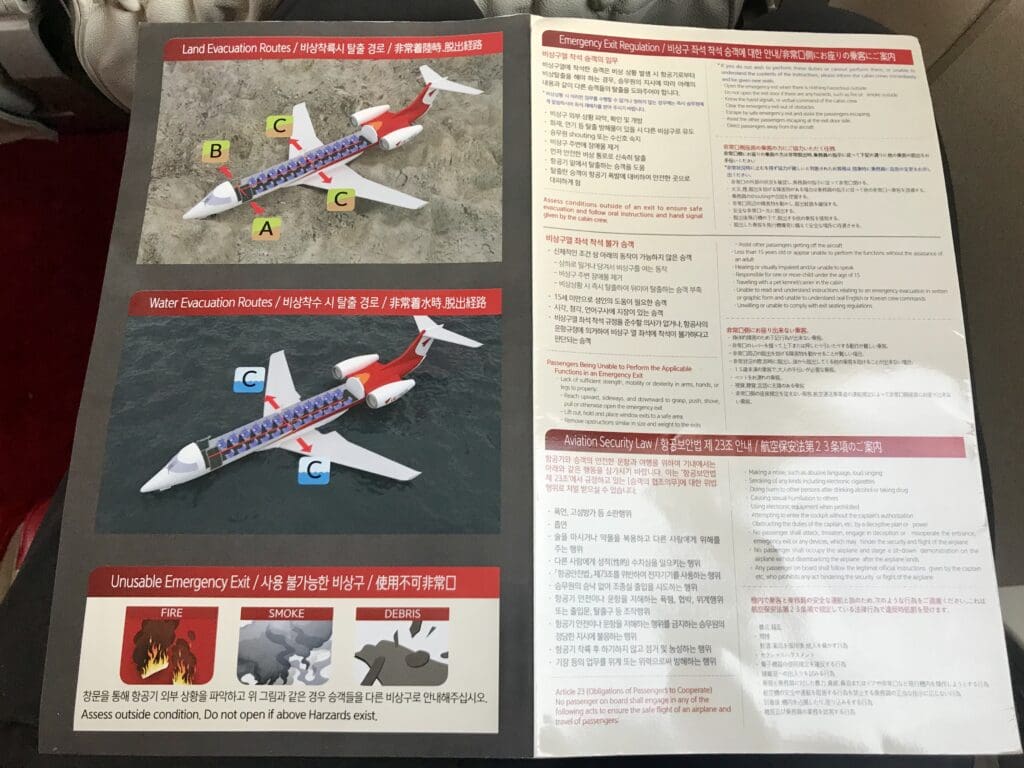
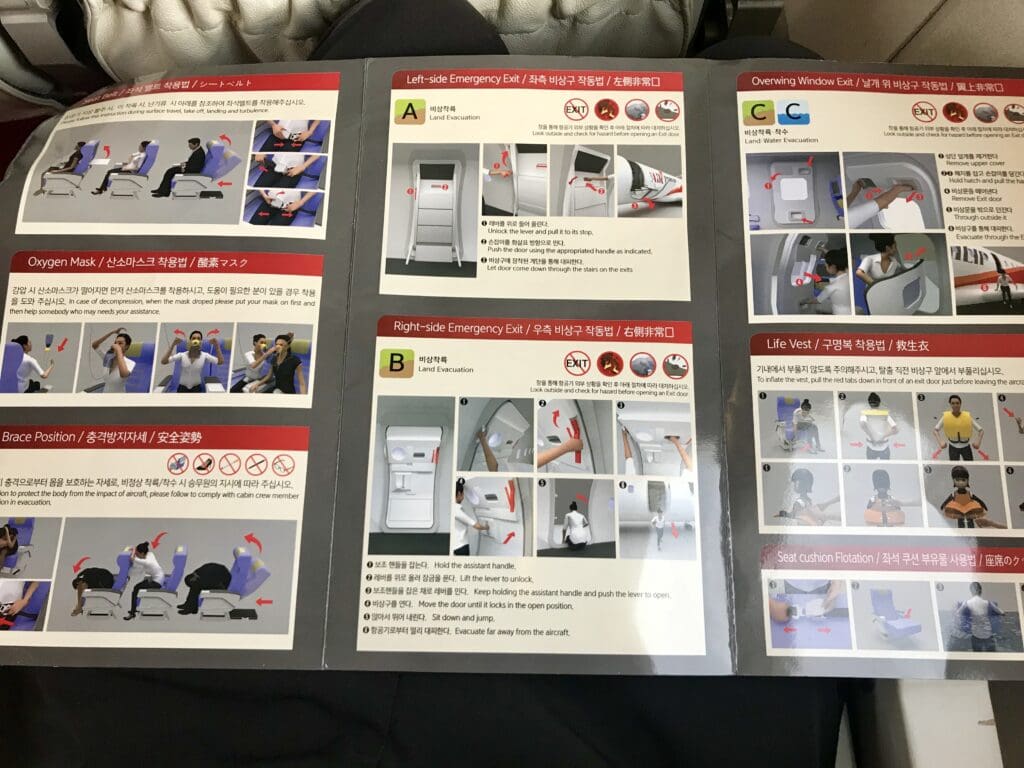

With fewer than 30% of seats onboard taken, boarding was completed around four minutes after the bus had arrived at the aircraft. Thankfully, given the light load, there was no jostling for space in the aircraft’s small overhead lockets. Once I had strapped myself in, the classical music came to an abrupt end before the purser conducted a standard welcome announcement in both Korean and English, welcoming passengers aboard the flight to Jeju, soon apologetically correcting herself. At 0948, the cabin door was closed and the Purser made a safety announcement whilst the other crew member performed the safety demonstration in the aisle at the front of the cabin. As this was being performed, the aircraft’s two Rolls Royce AE 3007 engines rather quietly powered up into life at the rear of the cabin and the aircraft soon propelled itself forward out of the remote stand.
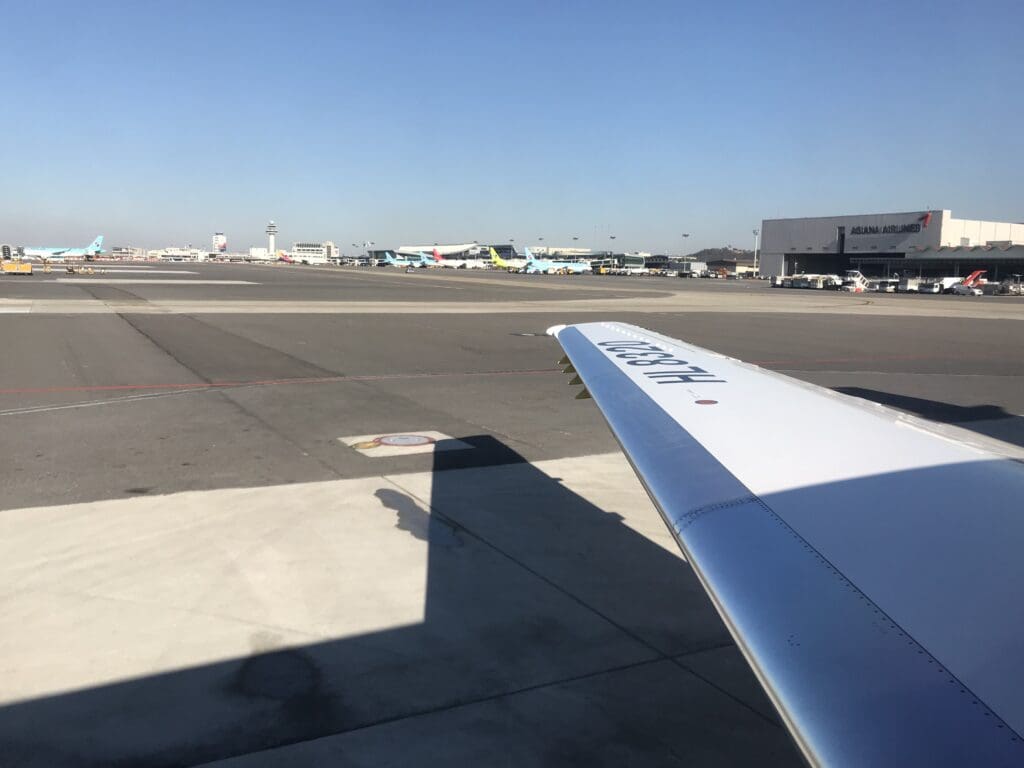
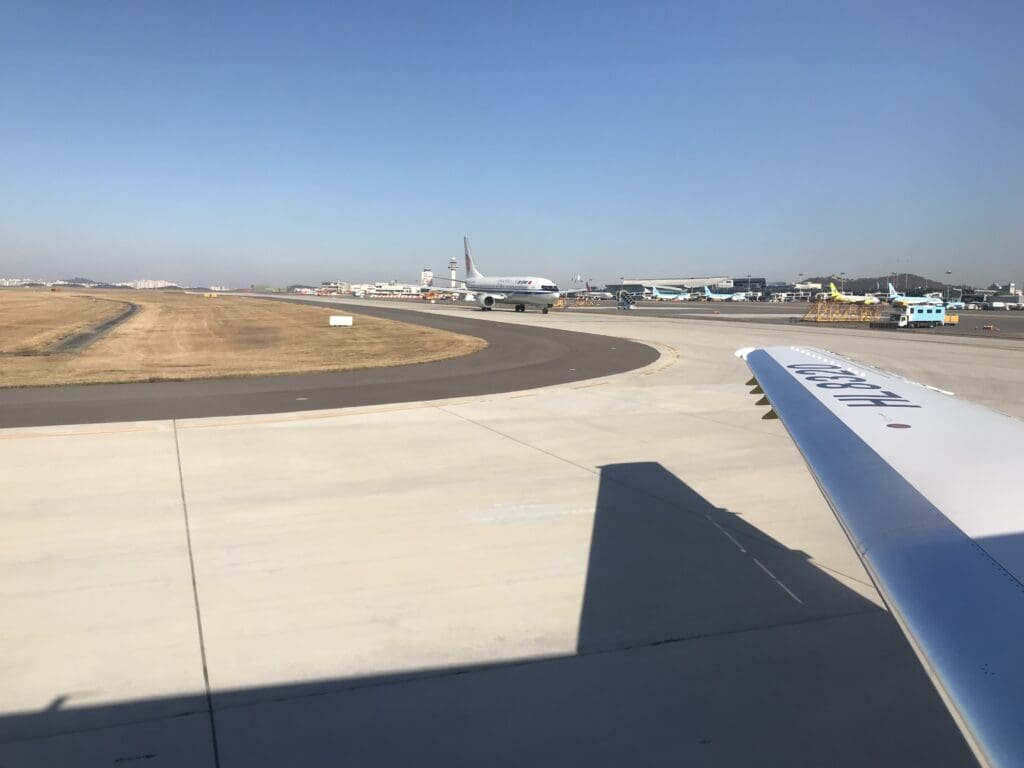
Seeing as the aircraft neared the end of the active departure runway, Runway 32R, after pushing in front of a Beijing-bound Air China Boeing 737-800, the aircraft arrived at the end of the runway almost immediately after leaving its stand. Following a brief pause, at 0955 the aircraft taxied onto the runway and the aircraft commenced a powerful rolling takeoff before quickly rotating upwards into the clear morning skies. As the aircraft headed upwards, good views of the terminal could be had as well as of Seoul’s Bukhansan National Park in the distance. After departure, the aircraft flew parallel with the Han River before Ganghwa Island came into view as well as glimpses of North Korea off in the distance.
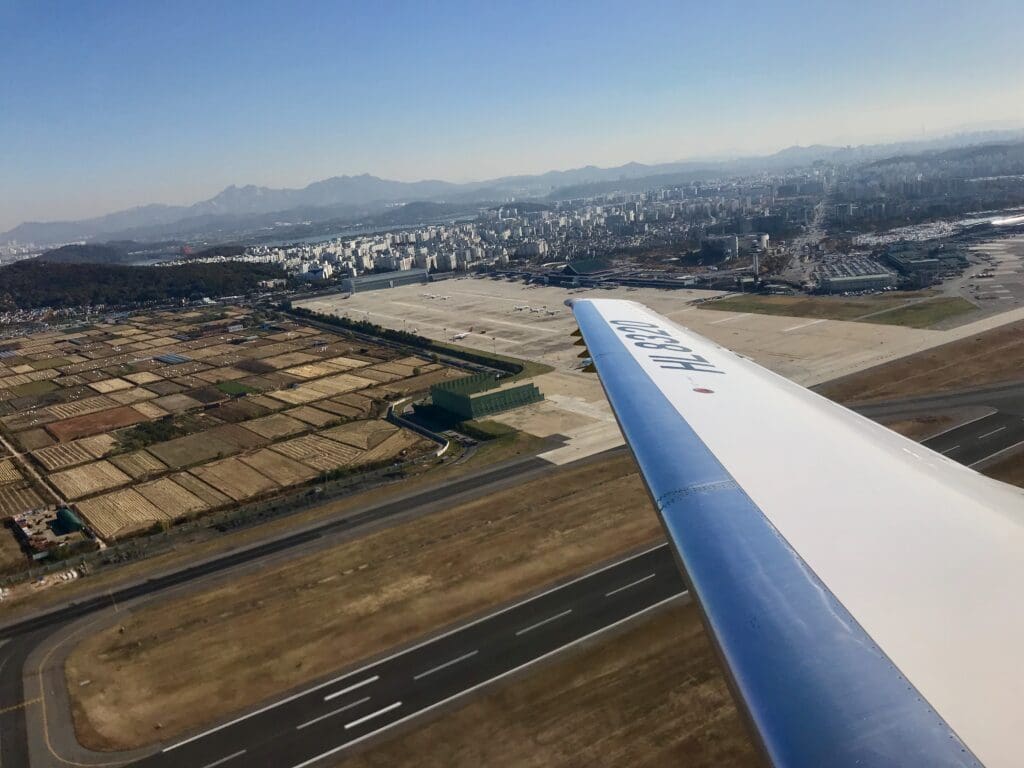
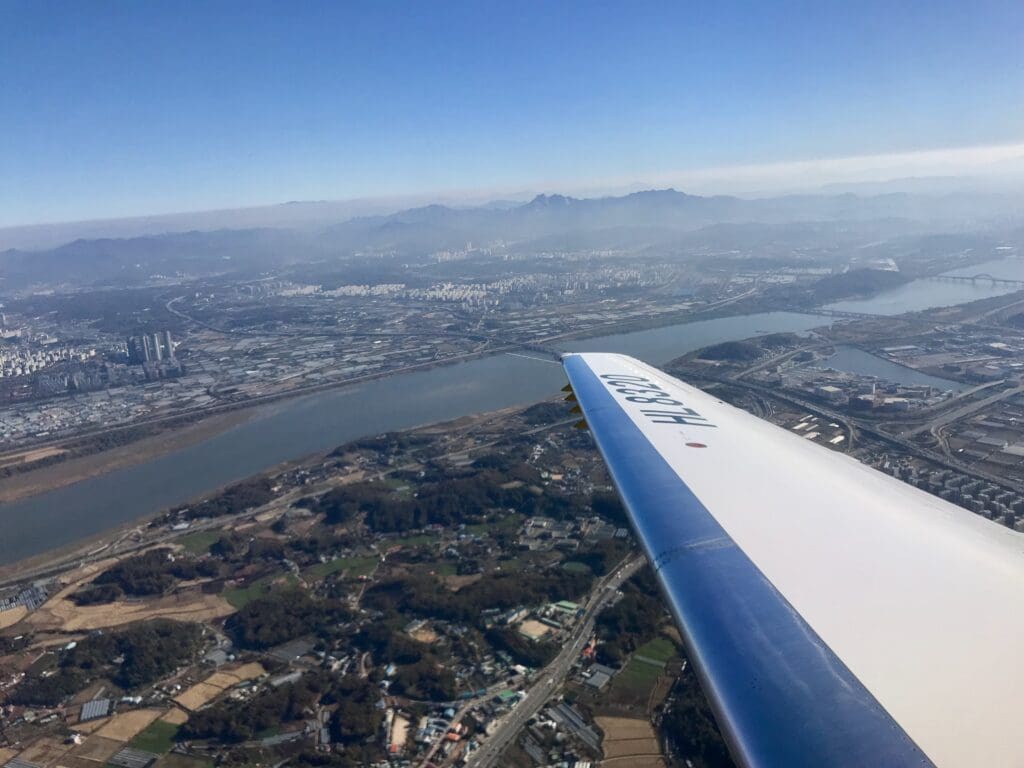
A few short minutes after departure, the aircraft turned to the south and overflew Incheon Airport which allowed for decent views of Korea’s main international gateway. Given the flight’s short distance, the aircraft soon levelled off at a relatively low cruising altitude of 18,000 feet at which point the Captain performed their welcome speech in Korean and English. This included a brief mention of the weather in Gwangju, the flight time and the usual warning regarding keeping seatbelts fastened whilst seated, after which the seatbelt signs were switched off.
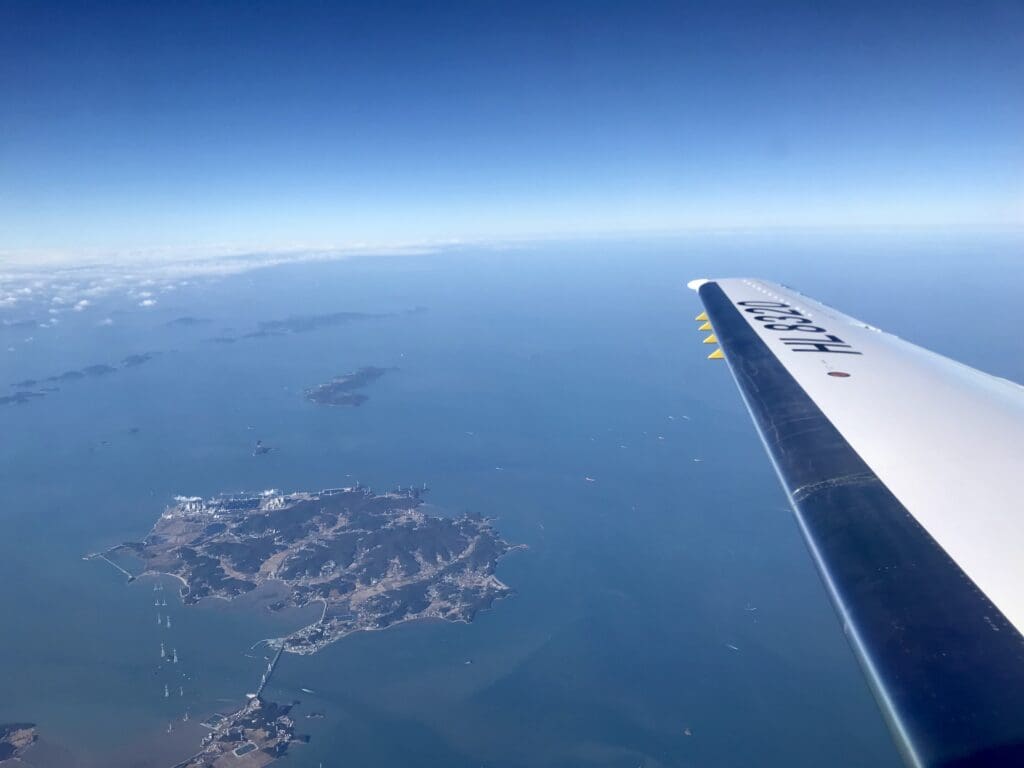
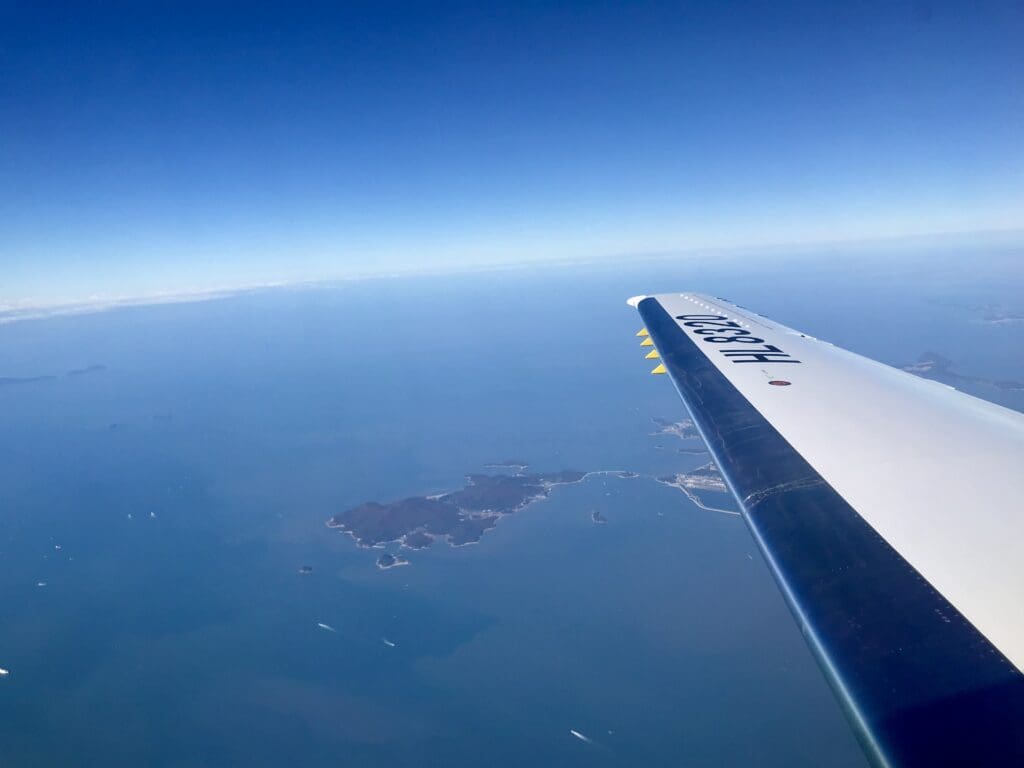
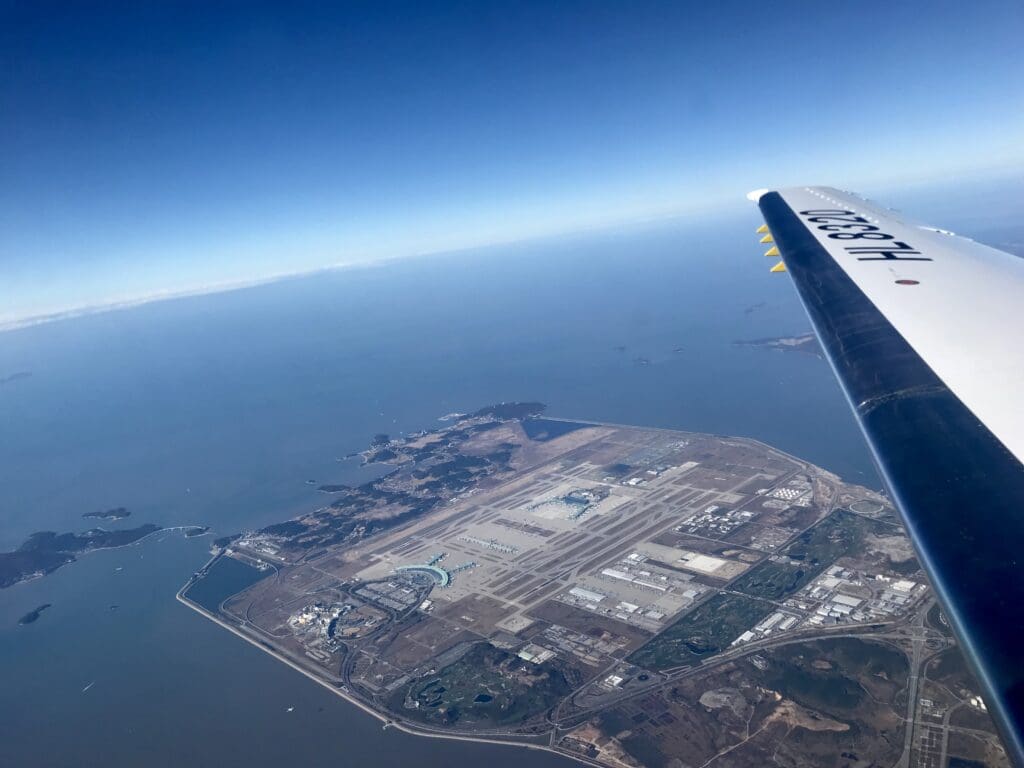
As soon as the aircraft levelled off, the crew donned aprons and commenced the onboard service, rolling a small cart out into the aisle. During this, the rearmost crew member handed out small snack boxes and described the contents of these to each passenger, whilst the other flight attendant handed out drinks – with coffee, juice and water offered to passengers. These boxes contained an eclectic mix of sugary goods – a pack of three Ferrero Rocher chocolates, a madeleine cake produced by a Gwangju bakery and a carton of Italian orange juice as well as a packaged wet wipe. Seeing as other Korean airlines limit their onboard service on domestic flights to drinks only, this service was unique and left me with no complaints. When the second crew member reached my row, I opted for a coffee which was cautiously handed over to me in an Air Philip branded paper cup. Once the service had been completed, one of the cabin crew members patrolled the aisles, taking away passengers’ boxes as soon as they had finished with them.
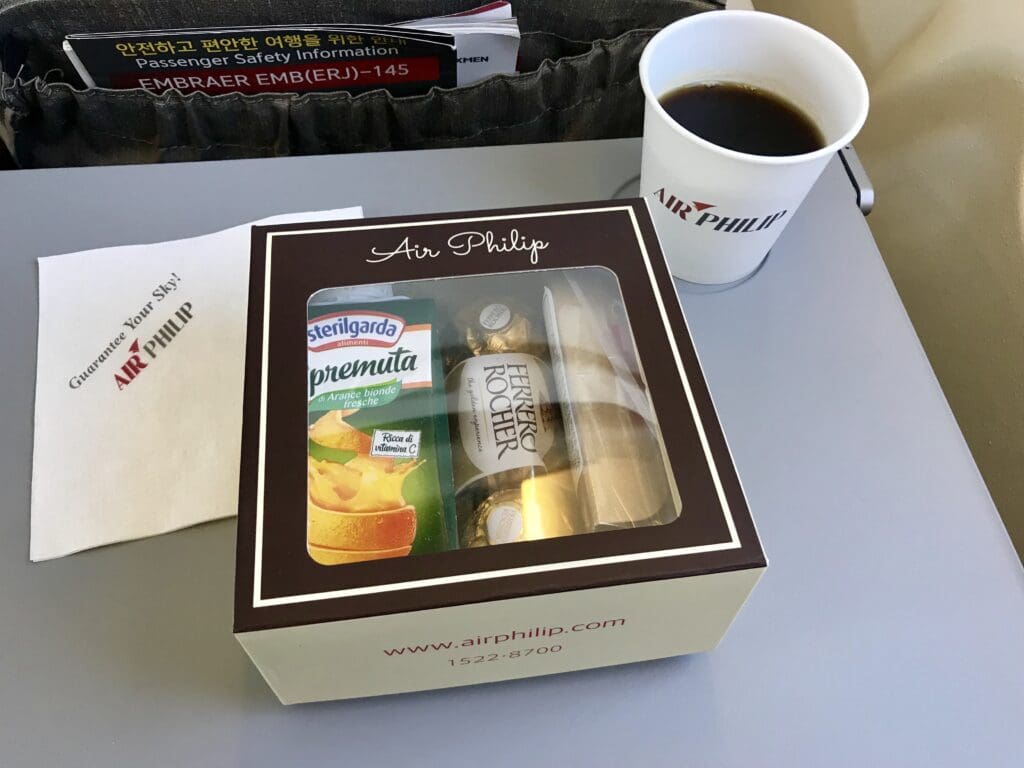
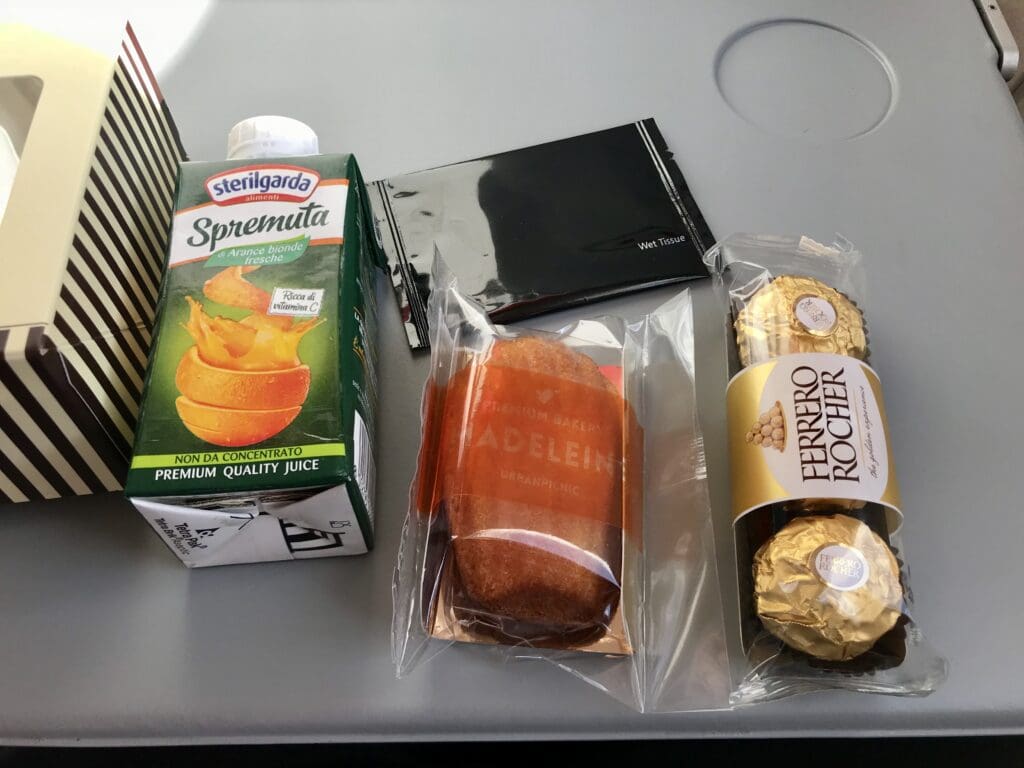
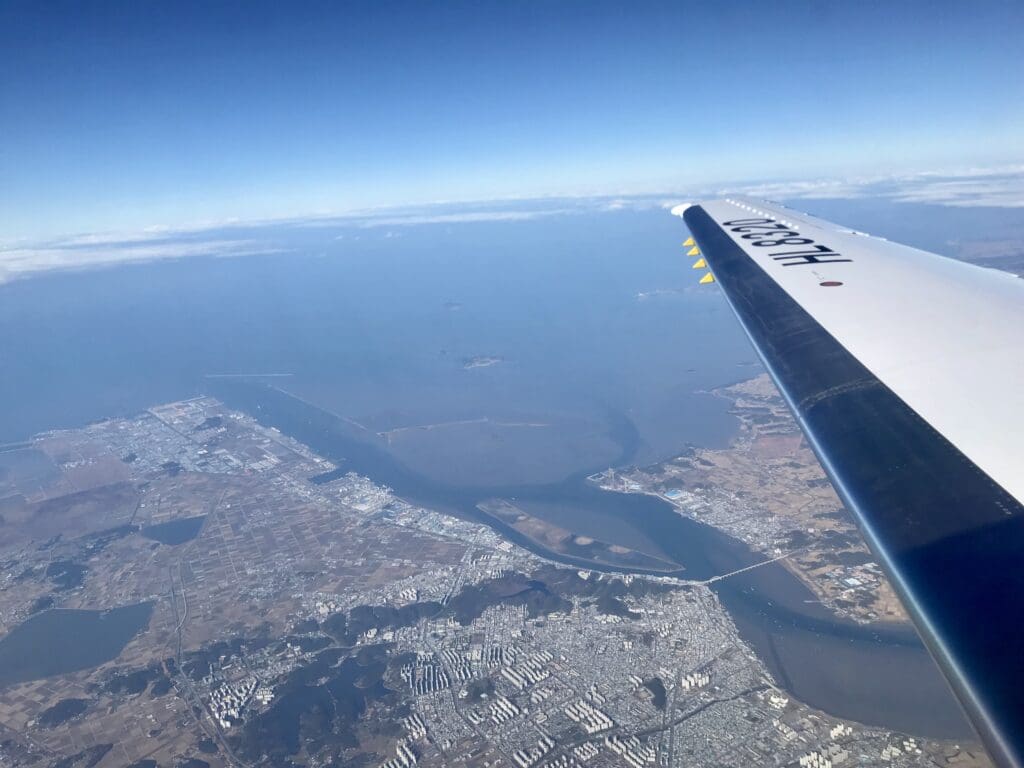
Thanks to the clear weather that morning and the flight’s low cruising altitude, as the aircraft headed southwards good views of Korea’s western coastline could be had from my seat on the right-hand side of the jet. Heading down the coastline the Embraer soared above places such as Boryeong – a coastal town famous for its annual mud festival and Gunsan – a city whose airbase hosts several squadrons of ROKAF KF-16s and USAF F-16s. Turning briefly to the inflight magazine, almost solely featuring articles related to finance, this was of no particular interest to me, meanwhile, this was entirely published in Korean only.
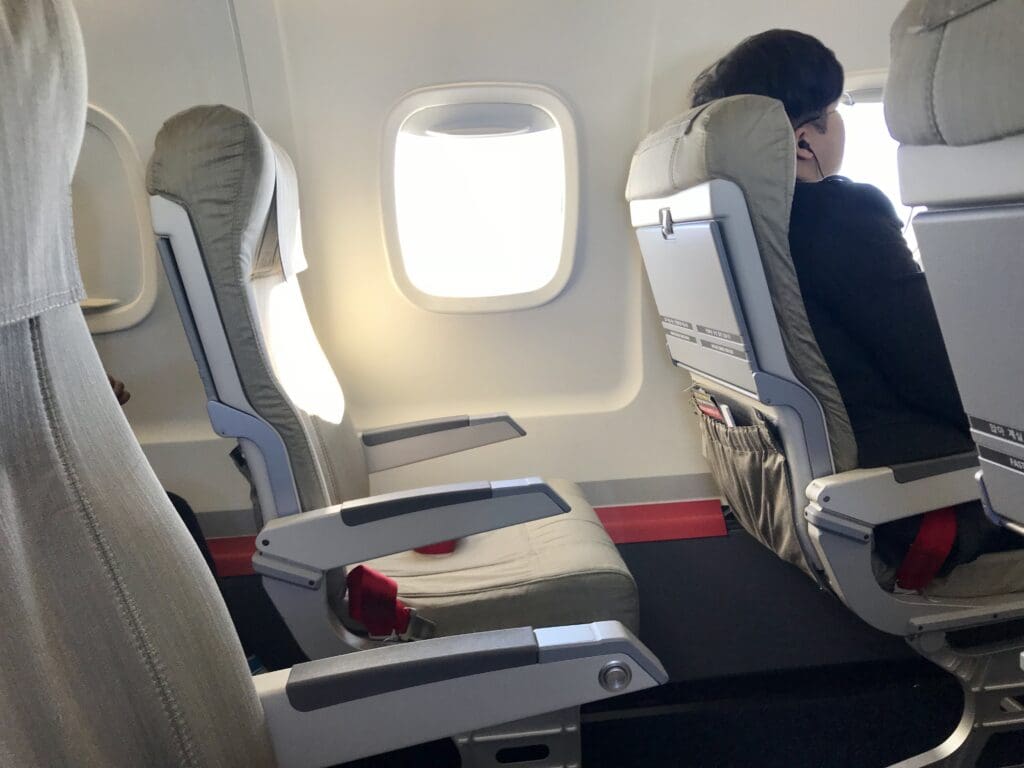

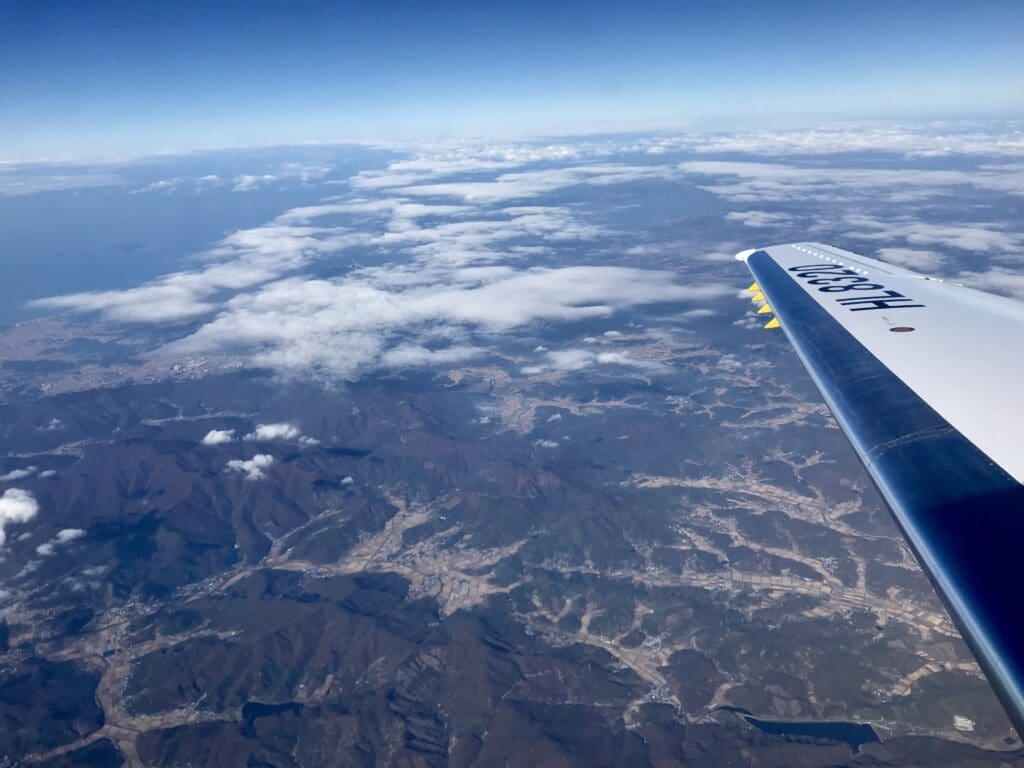
After polishing off the contents of the snack box, I made my way to the aircraft’s sole lavatory located at the rear of the aircraft. As I opened the door to this, a combination of good cleaning and perhaps less-than-average usage given the short nature of many of the airline’s services meant that this appeared to be spotlessly clean and in good condition. This was well stocked with soap, neatly folded toilet paper and paper towels. Whilst small, I was impressed with the faux-white marble sink, which seemed to be a little reminiscent of the lavatories onboard Concordes (sadly I have only had a look inside the preserved examples of this aircraft).
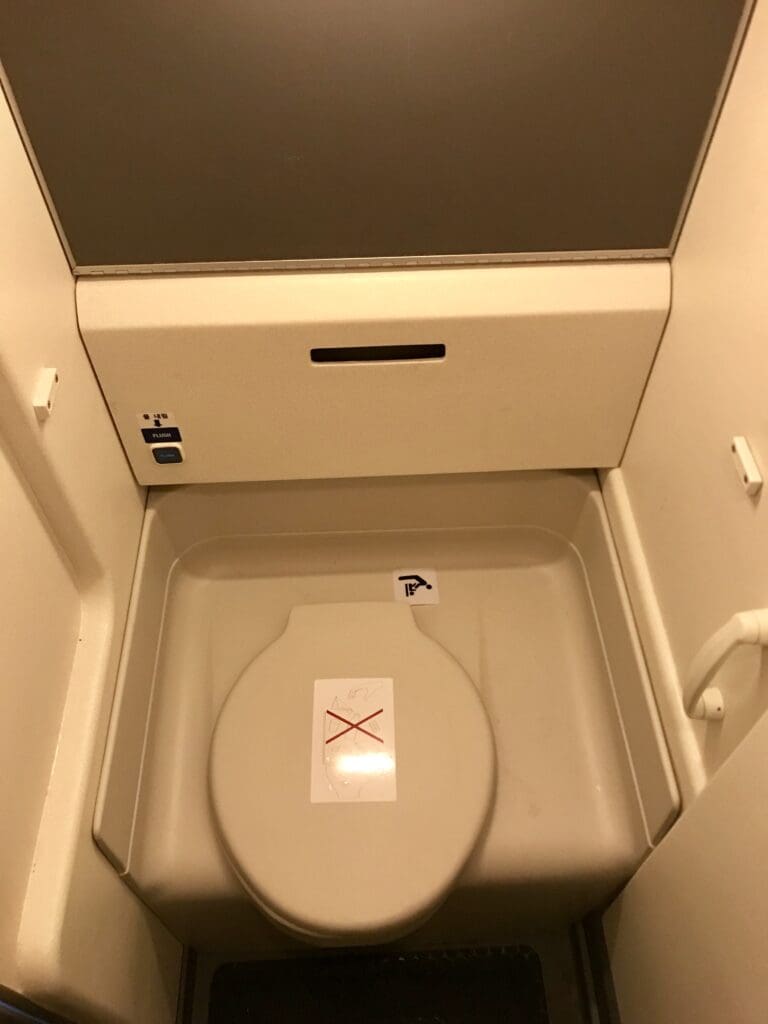
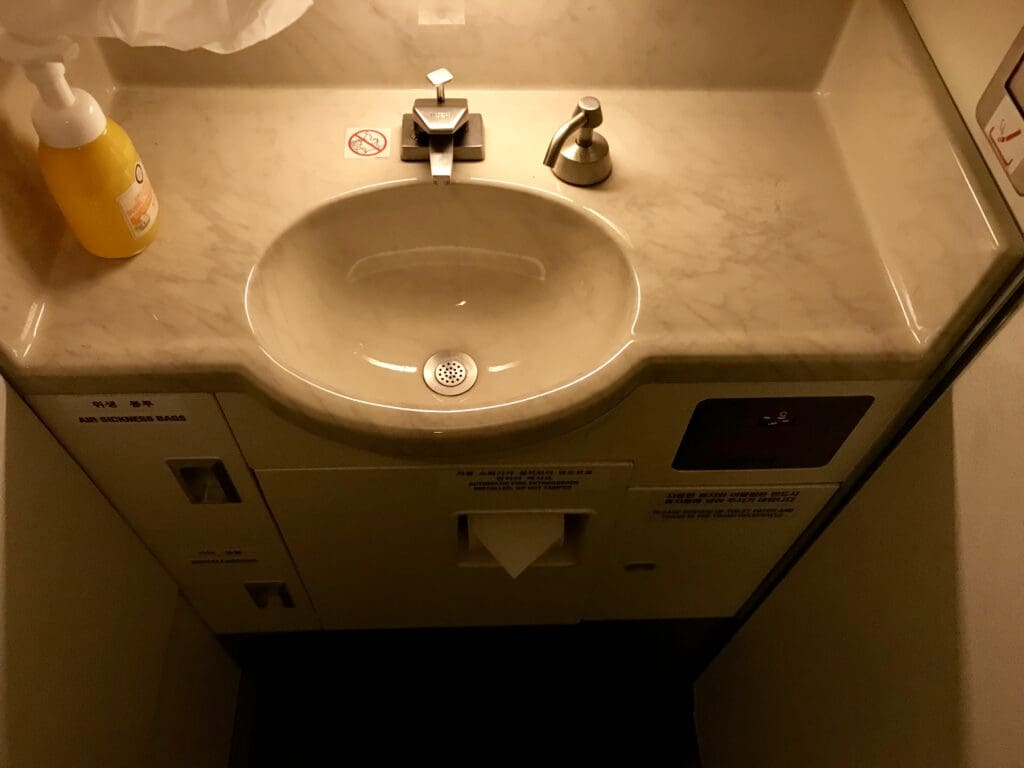
By the time I returned to my seat, my snackbox and empty cup had been collected and 25 minutes into the flight, the aircraft could be felt commencing its descent. This was officially confirmed a minute later with the reillumination of the seatbelt signs and a pre-arrival announcement from the purser. After making this announcement the purser then passed through the cabin, collecting any remaining rubbish and ensuring all was in place for the aircraft’s arrival. Perhaps noticing that I had been glued to the window and snapping photos almost non-stop during the flight, in the course of this the purser engaged me in conversation, first asking me if I spoke Korean. After replying that I did, I was thanked for flying with Air Philip and asked about my opinion of the airline and the Embraer 145. After giving honest and positive responses, the purser thanked me again before continuing on with their duties as the aircraft approached Gwangju.
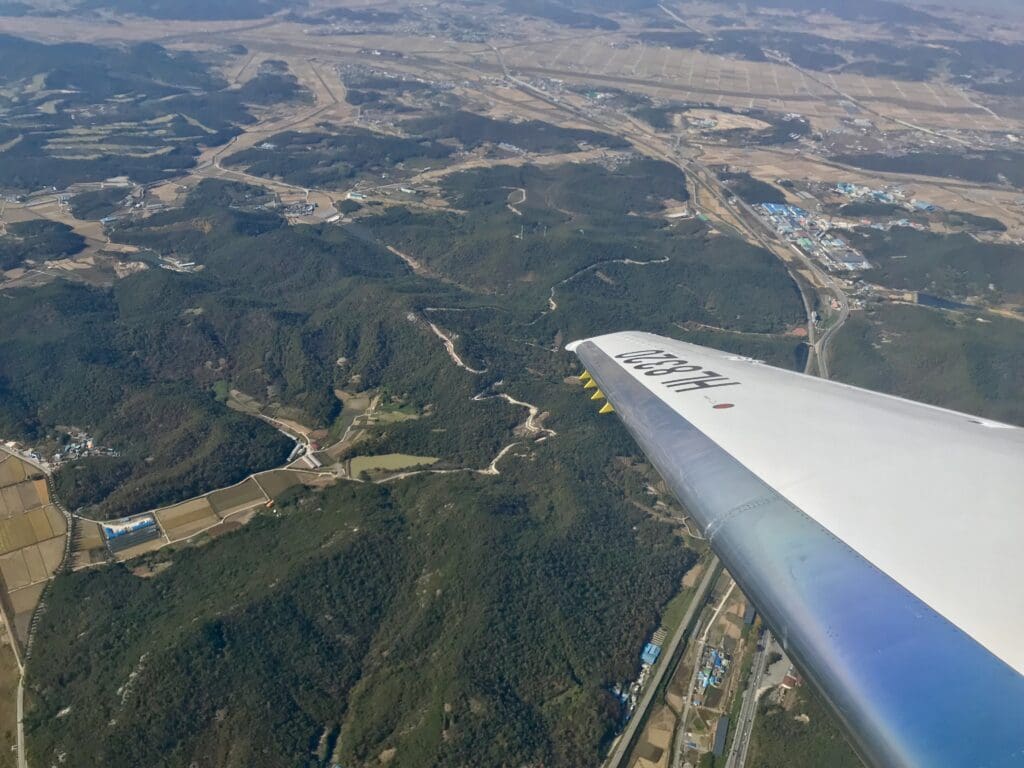
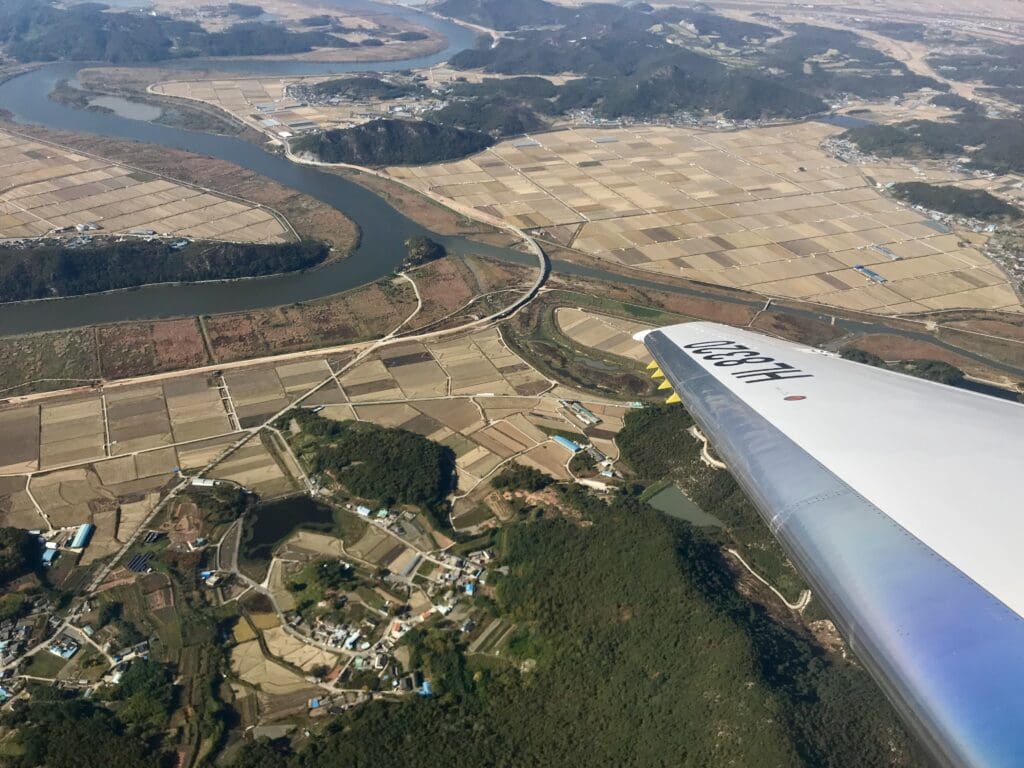
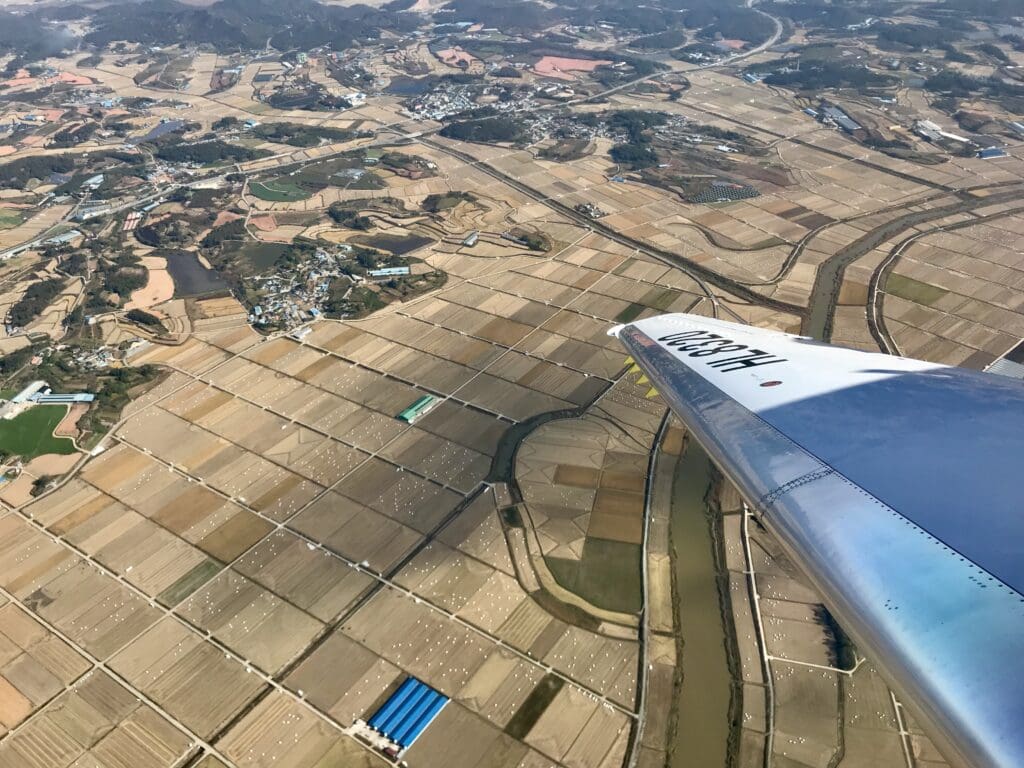
Around ten minutes after commencing the descent, the aircraft began to enter a hold above the mountains and fields surrounding Gwangju. This was soon followed by an announcement from the captain informing all onboard that this was due to congestion and apologised for this. Whilst Gwangju Airport can hardly be considered akin to Atlanta, Dubai or Heathrow in terms of traffic, like most of Korea’s regional airports, this is shared with the Korean military with three active ROKAF squadrons based at the airport. Following several scenic loops over the countryside, the aircraft established itself on the approach to Runway 04R and the flaps and landing gear were soon extended in preparation for the aircraft’s arrival.
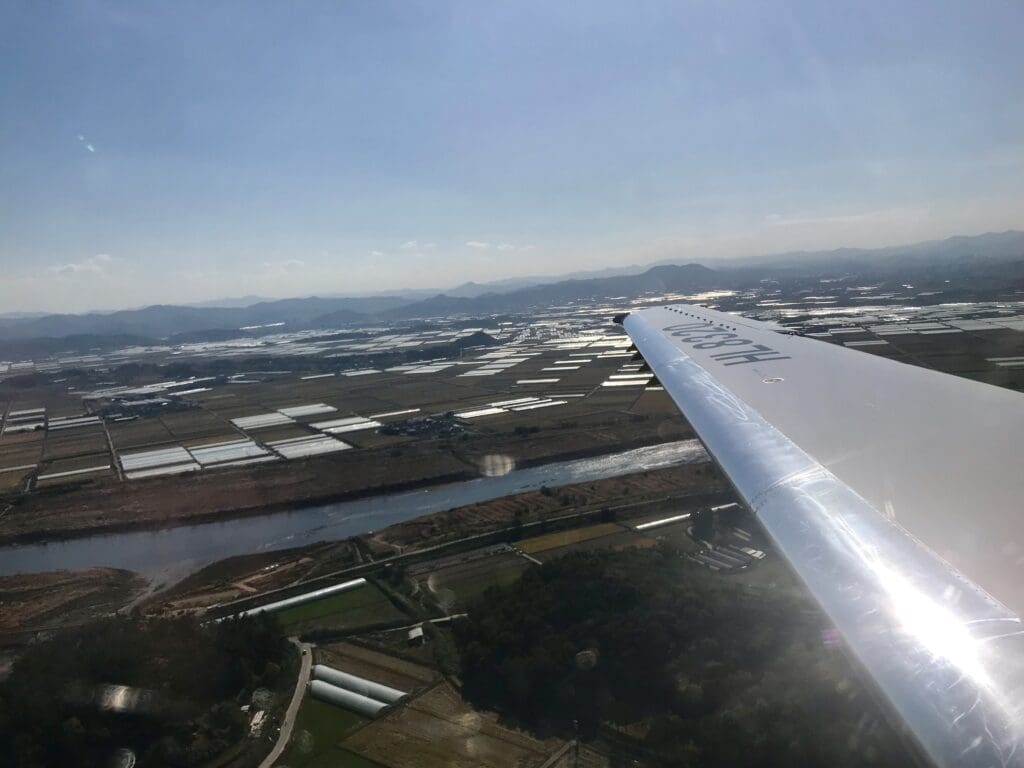
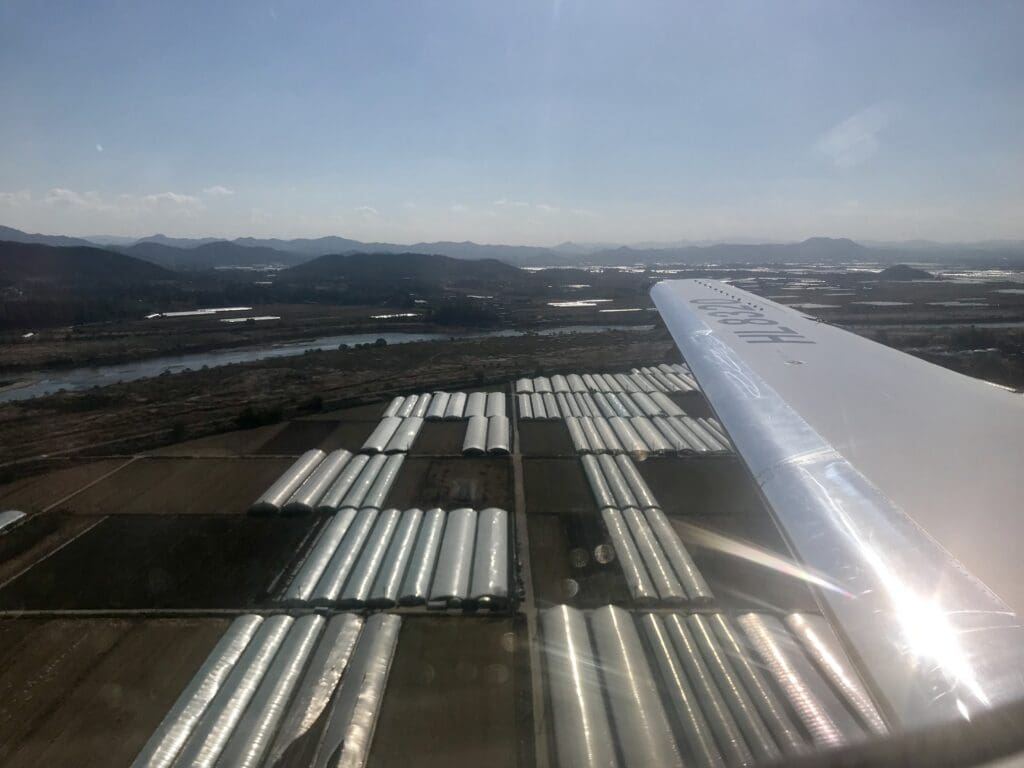
As with the rest of the flight, the approach down to the runway was very smooth and after floating down over the airport’s boundary, the aircraft made a firm touchdown at 1039. Seeing as the civilian portion of the airfield is located at its northerly end, there was no need for any sudden exit from the runway, so Embraer braked gently before exiting the runway at its far end. After leaving the runway, a welcome announcement was made in Korean and English which included a warning not to take photos at the airport due to the local military base at which point the aircraft held to allow for an Asiana Airlines Airbus A320 to depart from the parallel runway at the start of its short flight to Jeju. As it happened this was the exact same aircraft that would take me back to Seoul that evening. Once this aircraft had safely made it into the skies, the Embraer continued on its short journey to the terminal where it pulled into Stand 4, joining another Asiana Airlines A320 that was being readied for its flight to Gimpo.
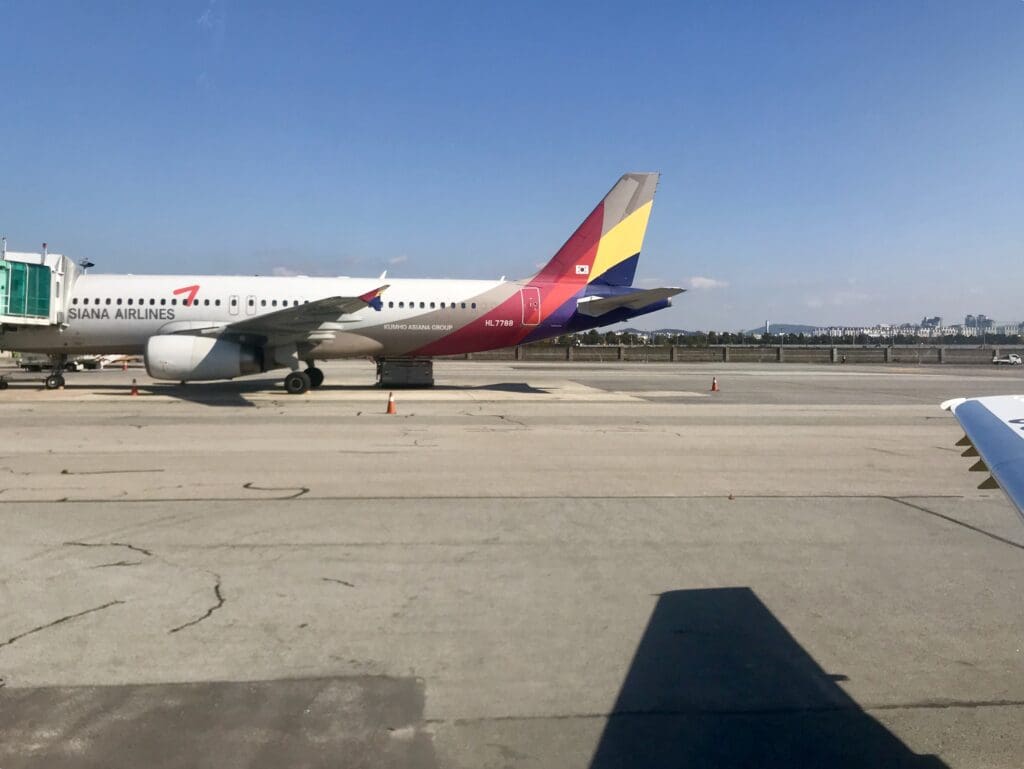
As soon as the aircraft came to a halt, the two engines spooled down and the seatbelt signs were turned off before the classical music rang out through the cabin once again. At this time the cabin door was opened, however, unlike at Gimpo, the built-in stairs were utilised for disembarkation. Seeing as only one passenger was allowed on these stairs at a time, this slowed down disembarkation a little however I soon reached the front of the cabin. After thanking the purser, I headed down the steps and onto the ramp where no fewer than five Air Philip ground staff members could be seen thanking the flight’s fourteen passengers and bowing at them as they walked across to the terminal. Upon entering the terminal, I made my way across the baggage claim hall and out into arrivals before heading to the airport’s dedicated subway station.
Summary
That morning, my experience with Air Philip was nothing short of fantastic from start to finish. Whilst I have yet to have a negative experience on a Korean domestic flight, Air Philip provided a level of service that was a cut above its competitors whilst costing passengers next to nothing. Yet, with the airline’s bargain tickets and lack of passengers, Air Philip’s operations did not appear to be sustainable in any way. On my next flight with Air Philip the following week from Jeju to Gimpo, whilst I had expected this to be a little busier, I had been one of only seven passengers onboard. With this considered, I was thus highly surprised at the airline’s delivery of two new aircraft in the following months and their commencement of services from Muan. Therefore, whilst unfortunate, I could hardly claim to be surprised upon hearing of the news of the airline’s halting of operations several months later. Nevertheless, I was very happy to have had the opportunity to sample the delights of the short-lived carrier.

